data acquisition
description: sum of methods of simultaneous or sequential time measurement and counting for measurable or quantifiable data and groups of contiguous data
92 results
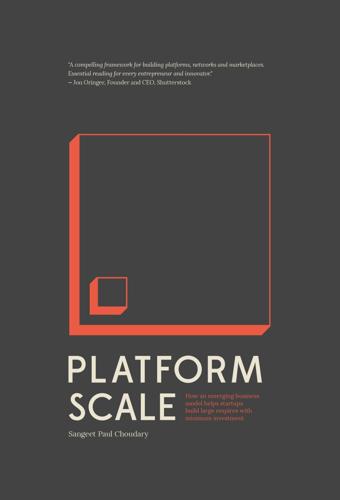
Platform Scale: How an Emerging Business Model Helps Startups Build Large Empires With Minimum Investment
by
Sangeet Paul Choudary
Published 14 Sep 2015
Build A Culture Of Data Acquisition The first step a traditional pipe-based business needs to take is cultural. It needs to create a culture of data acquisition. Most pipe-based businesses have been designed with a culture of dollar acquisition. Sales representatives who acquire revenue are incentivized accordingly. The key metrics measured are structured around the sole priority of dollar acquisition. To kickstart the journey towards platform scale, businesses will need to create a culture of data acquisition. Businesses like LinkedIn and Netflix demonstrate that higher data acquisition opens greater monetization opportunities.
…
However, they can never operate at platform scale because their ability to match the two sides doesn’t scale. A platform’s ability to scale matchmaking helps it to achieve platform scale (see Figure 16). Matchmaking is accomplished through data. As a result, data acquisition becomes an important priority for platforms. Designing the data model – specifications for what data are required for the value unit and the filter – is a critical step in platform design. This informs a platform’s data acquisition strategy. Data acquisition is subtle but critical. LinkedIn’s progress bar encourages users to provide more data to the platform by showing them the completeness of their profiles and suggesting simple actions to enrich them further.
…
The strength of filters, along with the consequent relevance of recommendations, is the single most important driver of value for consumers on the platform. To strengthen filters, platforms need to constantly acquire data about users. A scaling strategy for platforms is incomplete without an ongoing data acquisition strategy. Data acquisition must start right at the point of signing up, and must continue as the platform scales. For example, Pinterest asks users to ‘like’ a few boards and a few topics, as part of its on-boarding flow. This data helps Pinterest build out the initial filter. This filter needs to be strengthened throughout the life cycle of the user, through the explicit and implicit capture of data.
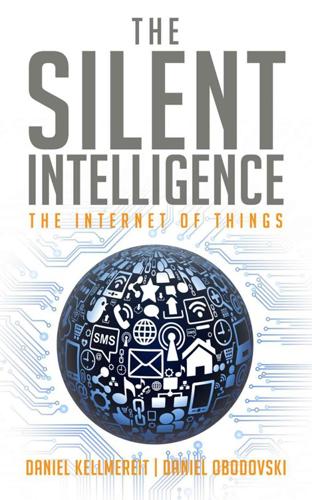
The Silent Intelligence: The Internet of Things
by
Daniel Kellmereit
and
Daniel Obodovski
Published 19 Sep 2013
In addition, as we mentioned in the previous chapter, the success of the Internet of Things largely depends on various industries embracing M2M technologies to solve their business problems. In this chapter, we present the parts of the technology ecosystem and its challenges, players, and future direction. Overall, the M2M technology ecosystem can be split into three major groups: data acquisition, data transport, and data analysis. Data acquisition is the device or hardware space — this is where data is being collected from various sensors and sent to the network. Examples are body sensors that measure pulse or calorie consumption, automotive OBD-II14 devices that measure car acceleration, and many others. RFID tags and readers belong to this category as well.
…
This enables us to find correlations, spot business trends, detect and prevent potential criminal activity, or optimize workflows of all kinds. To ensure the smooth flow of data, there are platforms that enable communications between any two of the three major groups in the technology ecosystem. For example, between data acquisition and data transport there is a Connected Device Platform (CDP). The CDP, sometimes referred to as middleware, ensures that the devices and sensors can be easily connected, primarily to a cellular network, and that the devices can be remotely managed. Imagine trying to reset thousands or hundreds of thousands of devices manually in the field.
…
I think they want to instill the sense of efficiency in the developer community. When they had a fixed price for unlimited mobile data, nobody had to worry about being efficient; it did not matter if the app checked the status of a device every ten seconds. Let’s take a closer look at the M2M technology ecosystem and its parts. Device hardware (data acquisition) is one of the most challenging areas of the ecosystem, primarily because it comes in all sizes and colors. You may think of black box–type devices that are usually installed on industrial equipment, but there are also OBD-II devices that get installed in cars, elegant body-worn fitness devices, connectivity modules that get embedded in home appliances, moisture sensors that go in the soil, RFID readers, and so on.
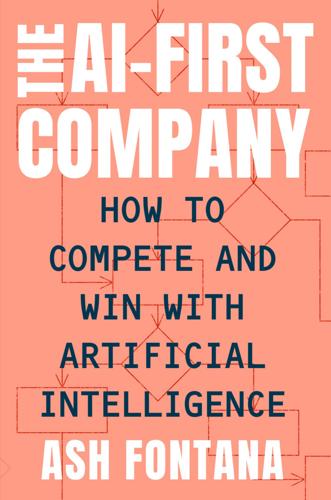
The AI-First Company
by
Ash Fontana
Published 4 May 2021
AI-First companies put capital, time, and effort behind getting data, ahead of other strategic priorities. But how to procure unique data? Where does a data strategy begin? This chapter covers methods to value data in order to smartly scope data acquisition projects, where to look for data, and how to create it from scratch. GETTING DATA VALUATION Before investing in data acquisition, establish a framework for valuing data. DISCRIMINATION—WAS IT HARD TO GET? ☐ Accessibility ☐ Availability ☐ Cost ☐ Time ☐ Fungibility DETERMINATION—IS IT USEFUL? ☐ Perishability ☐ Veracity ☐ Dimensionality ☐ Breadth ☐ Self-reinforcement Discrimination There are five ways to value data based on how difficult it is for others to get it (as opposed to its ultimate utility to the acquirer of that data): accessibility, availability, cost, time, and fungibility.
…
Dedicate a data scientist to serve as a consultant to customers and provide personalized, data-driven answers to a single question in order to demonstrate return on investment (ROI). Let’s contrast this approach with answering multiple questions at once using ML. one-off self-learning Data acquisition Manually fetch Automatically fetch through a direct database connection Data preparation None—pick a clean dataset Clean and label multiple datasets Storage Local Cloud Data pipeline One pipeline Many pipelines Feature development Find one feature Try many features Training One calculation Many calculations Computation Local central processing unit (CPU) or graphics processing unit (GPU) Cloud GPUs Modeling One model Network of models Deployment Local Cloud Presentation Print a report Build an interface Answering one question means working with one dataset that is likely to have the answer to that question, not gathering data from multiple sources and then cleaning (and labeling) that data.
…
Thus, customers tend to have less of their budget left when they get around to purchasing the integration product, or they just go with whatever data integration the vendor of the core product recommends. That said, Mulesoft went all the way to an initial public offering (IPO) with this strategy, and the companies Segment.io and Zapier successfully executed data acquisition strategies centered around tools that integrate a multitude of data sources. Segment, acquired by the public company Twilio for over three billion dollars, unifies marketing data across different SaaS products and internal databases. Its API-driven approach started with a simple, catchall analytics product, Connections, which competed against Web analytics products in the first act by getting data from the following sources: mobile apps through Apple iOS and Google Android; Web apps through its Analytics.js plugin, Shopify, and WordPress; servers (directly); and many cloud apps, from CRMs, to payment, to email apps.
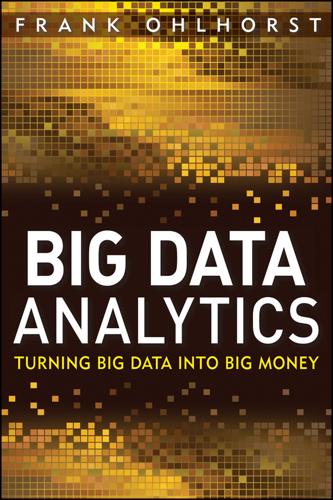
Big Data Analytics: Turning Big Data Into Big Money
by
Frank J. Ohlhorst
Published 28 Nov 2012
More to Big Data Than Meets the Eye Dealing with the Nuances of Big Data An Open Source Brings Forth Tools Caution: Obstacles Ahead Chapter 2: Why Big Data Matters Big Data Reaches Deep Obstacles Remain Data Continue to Evolve Data and Data Analysis are Getting More Complex The Future is Now Chapter 3: Big Data and the Business Case Realizing Value The Case for Big Data The Rise of Big Data Options Beyond Hadoop With Choice Come Decisions Chapter 4: Building the Big Data Team The Data Scientist The Team Challenge Different Teams, Different Goals Don’t Forget the Data Challenges Remain Teams versus Culture Gauging Success Chapter 5: Big Data Sources Hunting for Data Setting the Goal Big Data Sources Growing Diving Deeper into Big Data Sources A Wealth of Public Information Getting Started with Big Data Acquisition Ongoing Growth, No End in Sight Chapter 6: The Nuts and Bolts of Big Data The Storage Dilemma Building a Platform Bringing Structure to Unstructured Data Processing Power Choosing among In-house, Outsourced, or Hybrid Approaches Chapter 7: Security, Compliance, Auditing, and Protection Pragmatic Steps to Securing Big Data Classifying Data Protecting Big Data Analytics Big Data and Compliance The Intellectual Property Challenge Chapter 8: The Evolution of Big Data Big Data: The Modern Era Today, Tomorrow, and the Next Day Changing Algorithms Chapter 9: Best Practices for Big Data Analytics Start Small with Big Data Thinking Big Avoiding Worst Practices Baby Steps The Value of Anomalies Expediency versus Accuracy In-Memory Processing Chapter 10: Bringing it All Together The Path to Big Data The Realities of Thinking Big Data Hands-on Big Data The Big Data Pipeline in Depth Big Data Visualization Big Data Privacy Appendix: Supporting Data “The MapR Distribution for Apache Hadoop” “High Availability: No Single Points of Failure” About the Author Index WILEY & SAS BUSINESS SERIES The Wiley & SAS Business Series presents books that help senior-level managers with their critical management decisions.
…
Many more data sets are available from Amazon S3, and it is definitely worth visiting http://aws.amazon.com/publicdatasets/ to track these down. Another site to visit for a listing of public data sets is http://www.quora.com/Data/Where-can-I-get-large-datasets-open-to-the-public, a treasure trove of links to data sets and information related to those data sets. GETTING STARTED WITH BIG DATA ACQUISITION Barriers to Big Data adoption are generally cultural rather than technological. In particular, many organizations fail to implement Big Data programs because they are unable to appreciate how data analytics can improve their core business. One the most common triggers for Big Data development is a data explosion that makes existing data sets very large and increasingly difficult to manage with conventional database management tools.
…
That alone is probably reason enough for the majority of businesses to start evaluating how Big Data analytics can affect the bottom line, and those businesses should probably start evaluating Big Data promises sooner rather than later. Delving into the value of Big Data analytics reveals that elements such as heterogeneity, scale, timeliness, complexity, and privacy problems can impede progress at all phases of the process that create value from data. The primary problem begins at the point of data acquisition, when the data tsunami requires us to make decisions, currently in an ad hoc manner, about what data to keep, what to discard, and how to reliably store what we keep with the right metadata. Adding to the confusion is that most data today are not natively stored in a structured format; for example, tweets and blogs are weakly structured pieces of text, while images and video are structured for storage and display but not for semantic content and search.
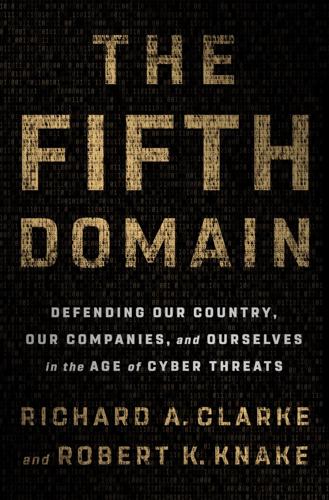
The Fifth Domain: Defending Our Country, Our Companies, and Ourselves in the Age of Cyber Threats
by
Richard A. Clarke
and
Robert K. Knake
Published 15 Jul 2019
Did someone tell you security was cheap? Would you rather buy everyone an emergency generator and months of fuel? Second, launch a major program using the best private-sector threat hunter firms to find and remove foreign implants, backdoors, and remote access to the industrial control systems (ICS) and supervisory control and data acquisition systems (SCADA) on the grid. This will not be easy. Ask the U.S. Navy how easy it was to get the Iranians out of their network (and by the way, the Russians are better). Third, put in place that combination of state-of-the-art cybersecurity best practices that have achieved success in America’s most secure corporations.
…
ICS and SCADA: These two types of software generally belong to the OT world. The former are industrial control systems, software from companies such as Siemens, Johnson Controls, and General Electric. ICS software runs factories and the machines in them. SCADA software can be thought of as a subset of programs that engage in supervisory controls and data acquisition. SCADA software often runs on little sensors that report data such as temperatures or voltages or pressure levels. Based on that data, some controls react automatically to avoid overloads and, uh, explosions. The acronym SCADA is often used to describe the software that runs the power grid.
…
Modern identity and access management products often integrate with user directory databases to manage permissions, and utilize multifactor authentication for an extra layer of security. Industrial Control System (ICS): A blanket term used to describe a collection of programmable logic controllers (PLCs), supervisory control and data acquisition (SCADA) systems, and various other control devices used to manage industrial processes. Industrial control systems interpret data from sensors with command functions and translate these inputs into actions that manipulate devices such as valves, regulators, actuators, relays, or switches. Information Sharing and Analysis Center (ISAC): A consortium of companies in a particular industry created for the purpose of sharing data about computer security threats and security best practices.
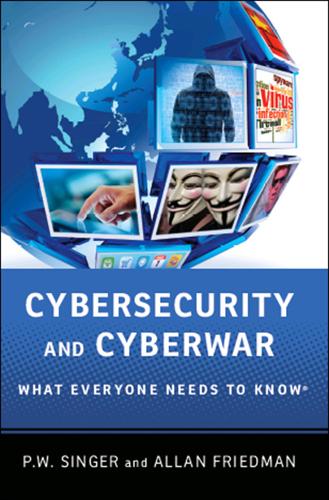
Cybersecurity: What Everyone Needs to Know
by
P. W. Singer
and
Allan Friedman
Published 3 Jan 2014
These are the underlying sectors that run our modern-day civilization, ranging from agriculture and food distribution to banking, healthcare, transportation, water, and power. Each of these once stood apart but are now all bound together and linked into cyberspace via information technology, often through what are known as “supervisory control and data acquisition” or SCADA systems. These are the computer systems that monitor, adjust switching, and control other processes of critical infrastructure. Notably, the private sector controls roughly 90 percent of US critical infrastructure, and the firms behind it use cyberspace to, among other things, balance the levels of chlorination in your city’s water, control the flow of gas that heats your home, and execute the financial transactions that keep currency prices stable.
…
It was this combination that led him to play a role in the discovery of one of the most notable weapons in history; and not just cyber history, but history overall. Since 1988, Ralph and his team of security experts had been advising on the safety of large-scale installations. Their special focus was industrial control systems, the computer systems like SCADA (short for “supervisory control and data acquisition”) that monitor and run industrial processes. SCADA is used in everything from the management and operation of power plants to the manufacture of candy wrappers. In 2010, like many other industrial control experts, Ralph grew concerned about a cyber “worm” of unknown origin that was spreading across the world and embedding itself in these control systems.
…
registered sites hit 550 million by 2012 Jon Russell, “Importance of Microblogs in China Shown as Weibos Pass 500 Million Users,” The Next Web, last modified November 11, 2011, http://thenextweb.com/asia/2011/11/11/importance-of-microblogs-in-china-shown-as-weibos-pass-550-million-users/. “supervisory control and data acquisition” Beidleman, “Defining and Deterring Cyber War,” p. 6. “the control system of our economy” Ibid., p. 1. “knowingly or not, it is life” Ben Hammersley, “Speech to the UK’s Information Assurance Advisory Council,” remarks at the Information Assurance Advisory Council, London, September 6, 2011, http://www.benhammersley.com/2011/09/my-speech-to-the-iaac/.

Big Data at Work: Dispelling the Myths, Uncovering the Opportunities
by
Thomas H. Davenport
Published 4 Feb 2014
Gardner, the CEO, explained the importance of controlling leakage: “Some large health systems report upwards of 50% leakage from hospital networks, while best-in-class organizations have leakage rates of under 20% . . . If we were to change leakage rates by just a few percentage points, systems that were operating at a loss could become profitable.”a Kyruus is structured into three major groups: data acquisition, integration, and processing; analytics; and applications and the user interface. The company’s data platform includes features to display and analyze data. a. Robert F. Higgins, Penrose O’Donnell, and Mehul Bhatt, “Kyruus: Big Data’s Search for the Killer App,” Case 813-060 (Boston: Harvard Business School, 2012), 13.
…
These days, the company is using big data technologies to accelerate the integration of petabytes of customer, product, sales, and campaign data in order to understand how to increase marketing returns and bring customers back into its stores. The retailer uses Hadoop to not only store but also process data transformations and integrate heterogeneous data more quickly and efficiently than ever. “We’re investing in real-time data acquisition as it happens,” says Oliver Ratzesberger, (at the time of the interview) Vice President of Information Analytics and Innovation at Sears Holdings. “No more ETL. Big data technologies make it easy to eliminate sources of latency that have built up over a period of time.” The company is now leveraging open-source projects Apache Kafka and Storm to enable real-time processing.
…
The company’s CTO, Phil Shelley (who has since left to start his own big data company), has cited big data’s capability to decrease the release of a set of complex marketing campaigns from eight weeks to one week—and the improvements are still being realized. Faster and more targeted campaigns are just the tip of the iceberg for the retailer, which recently launched a subsidiary, MetaScale, to provide non-retailers with big data services in the cloud. “Sears is investing in real-time data acquisition and integration as it happens,” says Ratzesberger. “We’re bringing in open-source solutions and changing our applications architecture. We’re creating a framework that, over time, any application can leverage.” Chapter_08.indd 192 03/12/13 12:57 PM What You Can Learn from Large Companies 193 Moreover, it’s easier to measure new process improvements against traditional methods, so quantifying faster product time to market, higher return on marketing investment, or fewer patient readmissions makes quantifying return on investment that much easier.
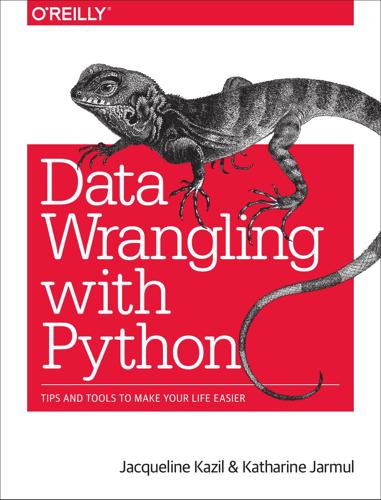
Data Wrangling With Python: Tips and Tools to Make Your Life Easier
by
Jacqueline Kazil
Published 4 Feb 2016
If the dataset is part of a government entity (federal, state, or local), then you may have legal standing under the Freedom of Information Act to obtain direct access to the data. We’ll cover data acquisition more fully in Chapter 6. Once you have identified the datasets you want and acquired them, you’ll need to get them into a usable format. In Chapters 3, 4, and 5, you will learn various techniques for programmatically acquiring data and transforming data from one form to another. Chapter 6 will look at some of the logistics behind human-to-human interac‐ tion with regard to data acquisition and lightly touch on legalities. In the same Chap‐ ters 3 through 5, we will present how to extract data from CSV, Excel, XML, JSON, and PDF files, and in Chapters 11, 12, and 13 you will learn how to extract data from websites and APIs.
…
Or imagine you are able to transform your data in such a way that you can execute tasks you never could before because you simply did not have the ability to process the information in its current form. But after working through Python exerci‐ ses with this book, you should be able to more effectively gather information from data you previously deemed inaccessible, too messy, or too vast. We will guide you through the process of data acquisition, cleaning, presentation, scaling, and automation. Our goal is to teach you how to easily wrangle your data, so you can spend more time focused on the content and analysis. We will overcome the limitations of your current tools and replace manual processing with clean, easy-toread Python code.
…
To update a tuple, it would have to be stored as a new object. Summary | 125 Concept Purpose dict dict is a built-in Python function that attempts to convert the input into a dictionary. To be used properly, conversion the data should look like key-value pairs. In the next chapter, we’ll talk about data acquisition and storage. This will provide more insight on how to acquire alternative data formats. In Chapters 7 and 8, we cover data cleaning, which will also help in the complexity of processing PDFs. 126 | Chapter 5: PDFs and Problem Solving in Python CHAPTER 6 Acquiring and Storing Data Finding your first dataset(s) to investigate might be the most important step toward acheiving your goal of answering your questions.

Prediction Machines: The Simple Economics of Artificial Intelligence
by
Ajay Agrawal
,
Joshua Gans
and
Avi Goldfarb
Published 16 Apr 2018
If you can obtain data on outcomes, then your prediction machine can learn continually through feedback. Decisions about Data Data is often costly to acquire, but prediction machines cannot operate without it. They require data to create, operate, and improve. You therefore must make decisions around the scale and scope of data acquisition. How many different types of data do you need? How many different objects are required for training? How frequently do you need to collect data? More types, more objects, and more frequency mean higher cost but also potentially higher benefit. In thinking through this decision, you must carefully determine what you want to predict.
…
KEY POINTS * * * Prediction machines utilize three types of data: (1) training data for training the AI, (2) input data for predicting, and (3) feedback data for improving the prediction accuracy. Data collection is costly; it’s an investment. The cost of data collection depends on how much data you need and how intrusive the collection process is. It is critical to balance the cost of data acquisition with the benefit of enhanced prediction accuracy. Determining the best approach requires estimating the ROI of each type of data: how much will it cost to acquire, and how valuable will the associated increase in prediction accuracy be? Statistical and economic reasons shape whether having more data generates more value.
…
See also trade-offs computers cheap arithmetic from, 12 programming of, effect of prediction on, 38, 40 conditional average, 33 consumer preferences data, 176–177 Consumer Reports, 169 Cook, Tim, 189–190 cookies, 175 Copenhagen metro, 104 corn, hybrid, 158–160, 181 correlations, unanticipated, 36–37 cost, 7–20 of data acquisition, 44 effects of reduced AI, 9–11 of foundational inputs, 11–13 internet, 10–11 of prediction, 13–15, 29 strategy and, 15–17, 169 counterfactual, 62–63 crashes, 200 creative destruction, 215 Creative Destruction Lab (CDL), 2, 134 credit card fraud detection, 24–25, 27, 91 judgment in, 84–88 creditworthiness, 27–28, 66–67 Croesus, King of Lydia, 23 crowd behavior, alterations in, 191 crystal balls, 24 customer churn, 32–36 Daimler, 164 Dartmouth College conference, 31–32, 39 data, 18, 43–51 acquiring, 46–47 business transformation and, 174–176 on customer churn, 35–36 decisions about, 47–49 economies of scale and, 49–50, 216 feedback, 43, 46, 204–205 homogeneity in, 201–202 how machines learn from, 45–47 input, 43 necessity of for prediction, 44–45 prediction with little, 98–102 privacy issues with, 189–190 quality of, 163, 200 real world, autonomous vehicles and, 186–187 retention practices, 216 roles of, 43 security risks with, 199–205 selling consumer, 176–177 signal vs. noise in, 48 strategic advantage from unique, 176–177 as strategic asset, 163–164 strategy and, 174–176 training, 43, 45–47, 202–204 types that humans have and machines don’t, 98 decision making, 18, 73–82.

The Transhumanist Reader
by
Max More
and
Natasha Vita-More
Published 4 Mar 2013
There are some ways to improve upon this by using patterns of stimulation in order to put each component through its paces, but then we run into the problem that the brain is plastic. Components may change their responses as a result of the exercises. Latent function may be better obtained from structural data acquisition. Even if purely structural or purely functional data acquisition could provide all the necessary information for a whole brain emulation, then such a constraint would still carry a burden of risk that is better avoided from the perspective of sensible engineering. It seems unwise to construct an enormously complex emulation by carrying out a single-shot transformation.
…
We consider a strategy of straightforward duplication of the activity, and look at the numbers of some of the components. The human brain has up to one hundred billion (1011) neurons and between one hundred trillion (1014) and one quadrillion (1015) synapses. But we have reached a point where for purposes of data acquisition these objects are now considered fairly large (e.g. 200 nm to 2,000 nm for synaptic spines and 4,000 nm to 100,000 nm for the neural soma), at least by the standards of the current nanotechnology industry (working with precision at 10s to 100s of nanometers). And in terms of their activity those components are mostly quiet.
…
There are by now at least three different versions of the Automated Tape-Collecting Lathe Ultramicrotome that was developed at the Lichtman Lab at Harvard University (Hayworth et al. 2007). Ken Hayworth is presently working on its successor that employs focused ion beam scanning electron microscopy (FIBSEM) to improve accuracy, reliability, and speed of structural data acquisition from whole brains at a resolution of 5 nm (Hayworth 2011). Meanwhile, the Knife-Edge Scanning Microscope (KESM) developed by Bruce McCormick is presently able to acquire neuronal fiber and vasculature data from entire mouse brains at a slightly lower resolution (McCormick and Mayerich 2004).
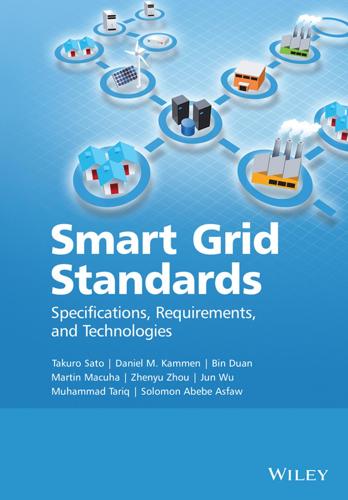
Smart Grid Standards
by
Takuro Sato
Published 17 Nov 2015
Smart Grid Standards 80 Table 3.1 Standard list of advanced metering infrastructure Function field Standard name Short introduction Product Data exchange Service IEC/TR 62357 IEC 61850 IEC 61968 Product IEC 60870-5 Data exchange IEC 61334 Product IEC 60834 Service Data exchange IEC 61970 IEC 61400-25 Data exchange IEC 60255-24 Electrical transmission IEC 61954 Service-oriented architecture (SOA) Substation automation Common information model (CIM)/distribution management Telecontrol equipment and systems – Part 5 – transmission protocols Distribution automation using distribution line carrier systems Teleprotection equipment of power systems – performance and testing Common information model (CIM)/energy management Wind turbines – Part 25: communications for monitoring and control of wind power plants Electrical relays – Part 24: common format for transient data exchange (COMTRADE) for power systems Power electronics for electrical transmission and distribution systems 3.1 Power Grid Systems Figure 3.1 shows a basic model of smart power grid architecture. Staff in the power control center should analyze the data and make corresponding changes in operation to ensure the implementation of Supervisory Control and Data Acquisition (SCADA), which provides efficiency, reliability, and safety control and monitor the Smart Grid. There are mainly four types of staff in a control center: dispatcher, check engineer, planner, and relay protection engineer. These staff have different responsibilities, and are interested in different aspects of the Smart Grid data.
…
This kind of battery storage is usually controlled by Energy Management Systems (EMSs) and interfaced with a Wide Area Situational Awareness (WASA) systems. • Battery storage can be integrated into the distribution grid for distribution voltage control. This kind of battery storage is usually controlled by Supervisory Control and Data Acquisition (SCADA) and interfaced with a Distribution Management System (DMS). • Battery storage can also be integrated directly into a smart home or building automation system for demand response and load control, power source backup, and so on. This kind of battery storage is usually controlled by the Home Energy Management System (HEMS) or Building Energy Management System (BEMS) and interfaced with the Energy Service Interface (ESI) systems.
…
There are QoS classes defined as follows: Unsolicited Grant Service, real-time Polling Service, Extended real-time Polling Service (only in mobile WiMAX), nonreal-time Polling Service, and Best Effort for non-QoS traffic. Communications in the Smart Grid 291 6.4.5 Satellite Communication Satellite communication has been utilized to connect remote substations and offer Supervisory Control and Data Acquisition (SCADA) and other Smart Grid-related applications for years. However, the major limitation is very high cost, which forced satellite communication to be used only in the edge situations, where there is no better cost-efficient option. Current satellite technologies have evolved significantly by reducing costs and latency, and increasing reliability and data rates.

Cyber War: The Next Threat to National Security and What to Do About It
by
Richard A. Clarke
and
Robert Knake
Published 15 Dec 2010
Two ten-year-old boys playing along the stream were killed, as was an eighteen-year-old farther up the creek. The nearby municipal water-treatment plant was severely damaged by the fire. When the U.S. National Transportation Safety Board examined why the pipeline burst, it focused on “the performance and security of the supervisory control and data acquisition (SCADA) system.” In other words, the software failed. The report does not conclude that in this case the explosion was intentionally caused by a hacker, but it is obvious from the analysis that pipelines like the one in Bellingham can be manipulated destructively from cyberspace. The clearest example of the dependency and the vulnerability brought on by computer controls also happens to be the one system that everything else depends upon: the electric power grid.
…
At the same time, they were, like every other company, inserting computer controls deep into their operations. Computer controls were also installed to manage the buying and selling, generation, and transmission. A SCADA system was already running each electric company’s substations, transformers, and generators. That Supervisory Control and Data Acquisition system got and sent signals out to all of the thousands of devices on the company’s grid. SCADAs are software programs, and most electric companies use one of a half dozen commercially available products. These control programs send signals to devices to regulate the electric load in various locations.
…
The Defense Department classifies information into five catergories: unclassified, confidential, secret, top secret, top secret/SCI (specially compartmented information). The SIPRNET is supposed to be air-gapped from, i.e., not physically touching, the unclassified NIPRNET and the Internet. Supervisory Control and Data Acquisition System (SCADA): Software for networks of devices that control the operation of a system of machines such as valves, pumps, generators, transformers, and robotic arms. SCADA software collects information about the condition of and activities on a system. SCADA software sends instructions to devices, often to do physical movements.

This Is for Everyone: The Captivating Memoir From the Inventor of the World Wide Web
by
Tim Berners-Lee
Published 8 Sep 2025
(I heard that an intern had been given the disk by Brian Carpenter at one point, and liked the way the program had been written. If you find it, do let me know – I suspect it’s now worth something.) In any event, programming accelerator control systems was no longer my assignment. Instead, I got to work in the Computing and Networks division to help with real-time data acquisition systems, now running on a new generation of Motorola-based hardware. This was a bracing engineering challenge, and one I took to, at least initially, with great enthusiasm. Construction was underway on the Large Electron–Positron Collider. The LEP was a giant ring-shaped device, located in a circular, underground tunnel some 27 kilometres in circumference, straddling the Swiss–French border.
…
CERN was focused on a specific kind of science, and while the place was unquestionably high-tech, the organization didn’t have a formal mission to act as a technology incubator. To make my hyperlink concept a reality, I had to convince my bosses it was a good idea. Fortunately, I had wonderful bosses. The Data Acquisition team was led by Peggie Rimmer. Peggie in turn worked for Mike Sendall, and Mike worked for David Williams, the head of the Data and Documents division. Peggie, Mike and David would later serve as my managerial protectors, directing resources and time towards the very first version of the web while deflecting criticism from budget-conscious overseers.
…
Nash ref1 electronics experiments ref1, ref2 home-built computer ref1, ref2, ref3, ref4 knighthood ref1 lecture tours ref1 marriage to Rosemary ref1, ref2 model railway ref1 move to USA ref1 music ref1 Order of Merit ref1 Oxford University ref1, ref2, ref3, ref4 Plessey ref1, ref2, ref3 Royal Society election ref1 running ref1, ref2 sailing ref1, ref2 skiing ref1, ref2, ref3 windsurfing ref1 see also CERN; MIT; World Wide Web ‘best viewed in’ ref1, ref2 Bezos, Jeff ref1 Bezos, Mackenzie ref1 Bina, Eric ref1, ref2, ref3 biometrics ref1, ref2 Bitcoin ref1 Black Mountains, Wales ref1 Bletchley Park ref1, ref2 blockchain technology ref1, ref2 blogosphere ref1 blogs ref1, ref2, ref3 Bluesky ref1 Bono ref1 bookmarks ref1 Bos, Burt ref1 Boston ref1, ref2, ref3, ref4 Bostrom, Nick ref1 bots ref1 Bouazizi, Mohamed ref1 Bourgeois, Alain ref1 Boutell, Thomas ref1 Boyera, Stephan ref1 Boyle, Danny ref1, ref2 Bratt, Steve ref1 Brazil ref1 Brewer, Judy ref1 Brexit ref1 Brin, Sergei ref1 broadband ref1 broadband providers Africa ref1 cable ref1 speeds ref1 Brown, Gordon ref1, ref2 browsers Cello ref1 Chrome ref1 cookies ref1, ref2, ref3 early development ref1, ref2, ref3 Firefox ref1 Internet Explorer ref1, ref2, ref3, ref4, ref5 landing pages ref1 Mosaic ref1, ref2, ref3, ref4 Netscape ref1, ref2 Opera ref1, ref2 smartphones ref1 Bruce, John ref1, ref2, ref3, ref4 Bruce, Tom ref1, ref2, ref3 Buckingham Palace ref1, ref2 Bulletin Board Services (BBS) ref1 bulletin board services (BBS) ref1 Burkina Faso ref1, ref2 Bush, Kate ref1 Bush, Vannevar ref1, ref2 Butler, Christopher ref1, ref2 ByteDance ref1 cable companies ref1 Cailliau, Robert ref1, ref2, ref3, ref4, ref5, ref6, ref7 Cairo ref1 calendars interoperability ref1, ref2 Mary Lee Berners-Lee design ref1 Cambridge Analytica ref1, ref2, ref3 Cambridge University ref1 Cameron, David ref1 Campbell Gray, Helen (grandmother) ref1 canals ref1, ref2 Capital One ref1 car analogy, net neutrality ref1 Cargill, Carl ref1 Carpenter, Brian ref1, ref2, ref3 Carroll, Lewis ref1 cathode-ray tubes ref1 Cello browser ref1, ref2 censorship ref1, ref2, ref3, ref4, ref5 Center for Democracy and Technology (CDT) ref1 Center for Humane Technology ref1 Cerf, Vint ref1, ref2, ref3, ref4, ref5, ref6, ref7 CERN CERNDoc ref1 culture ref1, ref2 description of site ref1 ‘Enquire-within’ program ref1, ref2, ref3 history and foundation ref1 information systems ref1 International Conference for the World Wide Web (WWW1) ref1, ref2 LAN ref1 language protocols ref1 Large Electron–Positron (LEP) ref1, ref2 Large Hadron Collider (LHC) ref1, ref2 mission ref1, ref2, ref3 phone numbers website ref1 Proton Synchrotron Booster (PSB) ref1, ref2 real-time data acquisition ref1, ref2 Tim Berners-Lee’s arrival ref1 Tim Berners-Lee’s return ref1 WWW intellectual property rights ref1, ref2 Charlie (an AI that works for you) ref1, ref2 chatbots ref1 ChatGPT ref1, ref2, ref3, ref4, ref5 chemistry ref1 Chequers ref1 chess ref1, ref2 children, smartphones access ref1 China ref1, ref2 Chrétien, Jean ref1 Christianity ref1 Chrome ref1, ref2, ref3 cities ‘rational’ ref1 rivers ref1 citizens’ data ref1, ref2, ref3, ref4 civil liberties ref1, ref2, ref3 Clark, David ref1 Clark, Jim ref1 Clarke, Arthur C. ref1 Clarke, Joan ref1 climate change ref1 Clippy ref1 closed captioning ref1 ‘The Cluetrain Manifesto’ ref1 Coalition for Content Provenance and Authenticity (C2PA) ref1 Coffey, Shelby ref1 collaboration collaborative filtering ref1 early websites ref1 intercreativity ref1, ref2, ref3, ref4 principle ref1, ref2, ref3 TPAC (Technical Plenary Advisory Committee) conferences ref1 Collage ref1 Common Crawl ref1, ref2, ref3 communication CERN information systems and LAN ref1, ref2 internet protocols ref1, ref2 compassion ref1, ref2 CompuServe ref1 computer mouse ref1 computer science, home education ref1 computer terminals ref1 computers home-built ref1, ref2, ref3, ref4 interoperability ref1 NeXT ref1, ref2, ref3, ref4, ref5, ref6, ref7 PC revolution ref1 Xerox Alto ref1 confidentiality ref1 connections ref1, ref2, ref3 connectivity ref1, ref2, ref3 Connolly, Dan ref1 consciousness ref1 consistent hashing ref1 conspiracy theories ref1, ref2 Content ID ref1 Contract for the Web ref1, ref2, ref3 cookies ref1, ref2, ref3 Copilot ref1 copyright ref1, ref2 Cortico ref1 Cosgrave, Paddy ref1 cost-of-living crisis ref1 Covid-19 ref1 Craigslist ref1 crawlers ref1 creativity ref1, ref2, ref3, ref4, ref5, ref6 cryptocurrency ref1 cryptography ref1, ref2, ref3, ref4 CSS (cascading style sheets) ref1, ref2 culture, trust ref1 Cunningham, Ward ref1 cybercriminals ref1 cybersquatting ref1, ref2 Cyc ref1 Daleks ref1 Dalitz, Meryl ref1 DARPA (Defense Advanced Research Projects Agency) ref1, ref2 data breaches ref1 compared to documents ref1 garbage in, garbage out ref1 linking ref1, ref2, ref3 open data ref1 PODS (Personal Online Data Stores) ref1 read–write web ref1 silos ref1 structures ref1, ref2, ref3, ref4 data packets ref1 data sheets ref1 data sovereignty ref1, ref2, ref3, ref4, ref5, ref6, ref7, ref8 data wallets ref1 see also PODS data.gov.uk ref1 Datasolids ref1 Davies, Roger ref1 Dawkins, Richard ref1 De Martin, Noel ref1 dead links ref1 Deakin, Roger ref1 decentralization ref1, ref2, ref3 deep web ref1 deepfakes ref1, ref2 DeepMind ref1, ref2 democracy Arab Spring ref1 Burkina Faso ref1 Cambridge Analytica ref1, ref2 deepfakes ref1 digital citizenship ref1 historical record ref1, ref2 Philippines ref1 see also civil liberties Denmark ref1 Dertouzos, Michael ref1, ref2, ref3, ref4 ‘Design Issues’ ref1, ref2, ref3, ref4 D.G.
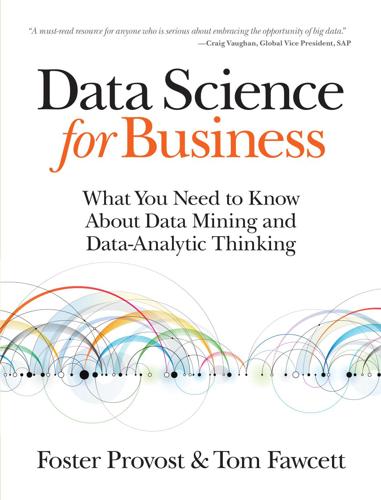
Data Science for Business: What You Need to Know About Data Mining and Data-Analytic Thinking
by
Foster Provost
and
Tom Fawcett
Published 30 Jun 2013
Different terms were offered at random to different customers. This may seem foolish outside the context of data-analytic thinking: you’re likely to lose money! This is true. In this case, losses are the cost of data acquisition. The data-analytic thinker needs to consider whether she expects the data to have sufficient value to justify the investment. So what happened with Signet Bank? As you might expect, when Signet began randomly offering terms to customers for data acquisition, the number of bad accounts soared. Signet went from an industry-leading “charge-off” rate (2.9% of balances went unpaid) to almost 6% charge-offs. Losses continued for a few years while the data scientists worked to build predictive models from the data, evaluate them, and deploy them to improve profit.
…
In a celebrated case, data mining discovered a set of rules that could help to quickly diagnose and fix a common error in industrial printing. The deployment succeeded simply by taping a sheet of paper containing the rules to the side of the printers (Evans & Fisher, 2002). Deployment can also be much more subtle, such as a change to data acquisition procedures, or a change to strategy, marketing, or operations resulting from insight gained from mining the data. Deploying a model into a production system typically requires that the model be re-coded for the production environment, usually for greater speed or compatibility with an existing system.
…
Consumers value the data-driven recommendations and product reviews/ratings that Amazon provides. This creates switching costs: competitors would have to provide extra value to Amazon’s customers to entice them to shop elsewhere—either with lower prices or with some other valuable product or service that Amazon does not provide. Thus, when the data acquisition is tied directly to the value provided by the data, the resulting virtuous cycle creates a catch-22 for competitors: competitors need customers in order to acquire the necessary data, but they need the data in order to provide equivalent service to attract the customers. Entrepreneurs and investors might turn this strategic consideration around: what historical circumstances now exist that may not continue indefinitely, and which may allow me to gain access to or to build a data asset more cheaply than will be possible in the future?
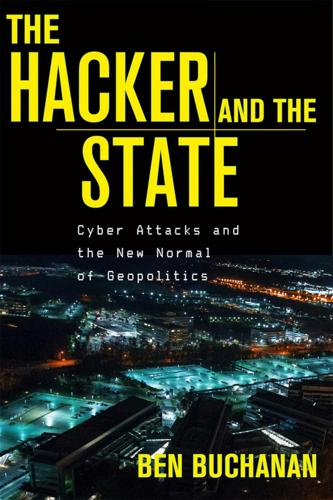
The Hacker and the State: Cyber Attacks and the New Normal of Geopolitics
by
Ben Buchanan
Published 25 Feb 2020
Rather than defeat the defenses the Ukrainian companies had set up, the hackers just needed to impersonate the right people. Logging in as those employees gave the hackers access to the operational side of the network and all that it controlled. The operational side of the network contained machines used for technical work known as supervisory control and data acquisition (SCADA). SCADA systems directly manage components of critical infrastructure all over the world. A hacker with the opportunity and skill to manipulate such a system could do substantial damage. The United States and Israel proved this to the world with the Stuxnet attack, and now Russian hackers were preparing to try their hand at it in Ukraine.
…
See also shaping; Stuxnet; Wiper San Bernardino attack, 40, 42, 44 sanctions, 13 Sanders, Bernie, 225. See also election interference, Russian (2016) Sands Casino attack, 160–164, 165, 310 Sandworm, 202 Sanger, David, 147 Saudi Arabia: Aramco attack (Shamoon) and, 148–153, 159, 164, 165; hacking operations of, 317; listening stations in, 33 SCADA (supervisory control and data acquisition) systems, 192. See also blackouts in Ukraine; Stuxnet Schelling, Thomas, 4, 145, 310 Schmidt, Eric, 59 Schneier, Bruce, 256 Schultz, Debbie Wasserman, 225 ScreenOS, 76. See also Juniper Networks SEA-ME-WE-4, 34 secrecy, 101; decryption and, 60; home-field advantage and, 16; importance of, 39, 240 (see also exposure); signaling and, 308–309; Stuxnet and, 139, 146, 147.
…
See also espionage staging server theory, 257–258 standards: International Organization for Standardization, 69; NIST, 66–70 statecraft: during Cold War, 4–5; competitive aspects of, 3; by signaling, 4 Stein, Jill, 233 Stone, Roger, 226–227, 230 stored communications, 26 Stuxnet, 92, 129–130, 131, 149, 197, 213, 289; discovery of, 137–142, 147; effects of, 136–137; geopolitical implications of, 141; lawyers and, 135; objective of, 144, 146, 164; operational security of, 139, 146, 147; payload of, 135–136; self-restraints of, 135; spread of, 134–142; versions of, 134–135 Su Bin, 99–102, 116 Sullivan, Margaret, 180 supernotes, 268–269, 270–271 supervisory control and data acquisition (SCADA) systems, 192. See also blackouts in Ukraine; Stuxnet surveillance, 21, 26; AT&T and, 21; checks and balances and, 55; internet companies and, 21, 26 (see also PRISM) SWIFT (Society for Worldwide Interbank Financial Telecommunication) system, 272–275, 276–277, 283, 284, 286, 287 Symantec, 140, 294 Tailored Access Operations (TAO), 112–115, 117, 258 Tait, Matt, 256 target adaptation, 39, 60 targeting, 110 targets, foreign, 56–57 Task Force Orange, 307 TeDi (Territorial Dispute) program, 117–118, 120 telecommunications companies, 15; AT&T, 14–15, 20–25; Five Eyes’ partnerships with, 37; networks and, 17; NSA’s partnership with, 20–24; Verizon, 24; Vodafone, 28, 29, 30.
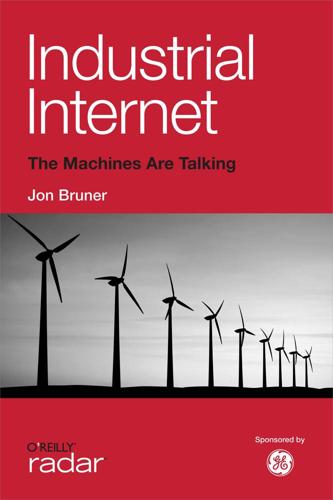
Industrial Internet
by
Jon Bruner
Published 27 Mar 2013
Better understanding of maintenance needs means better allocation of equipment — since the timing of maintenance can be optimized if it’s proactive rather than reactive — and workers can similarly avoid being idled or having their time absorbed in detecting maintenance needs. Large manufacturers have invested billions of dollars in SCADA (supervisory control and data acquisition — the low-level industrial control networks that operate automated machines). Comprehensive stacks of specialized software link these systems all the way to management dashboards, but many of these systems have their roots in automation, not high-level intelligence and analysis. Factory managers are understandably conservative in managing these systems, and demand highly-robust, proven technologies in settings where the functioning of a big machine or assembly line is at stake.

Our Final Invention: Artificial Intelligence and the End of the Human Era
by
James Barrat
Published 30 Sep 2013
The vulnerability investigators sought to explore is endemic in North America’s electrical grid—the habit of attaching the controlling hardware of critical machinery to the Internet so it can be remotely operated, and “protecting” it with passwords, firewalls, encryption, and other safeguards that crooks routinely cut through like hot knives through butter. The device that controlled DHS’ tortured generator is present throughout our national energy network. It is known as a supervisory control and data acquisition, or SCADA, system. SCADA systems don’t just control devices in the electrical grid, but all manner of modern hardware, including traffic lights, nuclear power plants, oil and gas pipelines, water treatment facilities, and factory assembly lines. SCADA has become almost a household acronym because of the phenomenon called Stuxnet.
…
LIDA (Learning Intelligent Distributed Agent) Lifeboat Foundation Lipson, Hod Loebner, Hugh Lynn, William J., III Machine Intelligence Research Institute (MIRI) Singularity Summit machine learning Madoff, Bernie malware Mazzafro, Joe McCarthy, John McGurk, Sean military battlefield robots and drones DARPA, see DARPA energy infrastructure and nuclear weapons, see nuclear weapons Mind Children (Moravec) Minsky, Marvin Mitchell, Tom mobile phones see also iPhone Monster Cat Moore, Gordon Moore’s Law morality see also Friendly AI Moravec, Hans Moravec’s Paradox mortality, see immortality mortgage crisis Mutually Assured Destruction (MAD) nano assemblers nanotechnology “gray goo” problem and natural language processing (NLP) natural selection Nekomata (Monster Cat) NELL (Never-Ending-Language-Learning system) neural networks neurons New Scientist New York Times Newman, Max Newton, Isaac Ng, Andrew 9/11 attacks Normal Accidents: Living with High-Risk Technologies (Perrow) normalcy bias North Korea Norvig, Peter Novamente nuclear fission nuclear power plant disasters nuclear weapons of Iran Numenta Ohana, Steve Olympic Games (cyberwar campaign) Omohundro, Stephen OpenCog Otellini, Paul Page, Larry paper clip maximizer scenario parallel processing pattern recognition Pendleton, Leslie Perceptron Perrow, Charles Piaget, Jean power grid Precautionary Principle programming bad evolutionary genetic ordinary self-improving, see self-improvement Rackspace rational agent theory of economics recombinant DNA Reflections on Artificial Intelligence (Whitby) resource acquisition risks of artificial intelligence apoptotic systems and Asilomar Guidelines and Busy Child scenario and, see Busy Child scenario defenses against lack of dialogue about malicious AI Precautionary Principle and runaway AI Safe-AI Scaffolding Approach and Stuxnet and unintended consequences robots, robotics Asimov’s Three Laws of in dangerous and service jobs in sportswriting Rosenblatt, Frank Rowling, J. K. Rubin, Andrew “Runaround” (Asimov) Safe-AI Scaffolding Approach Sagan, Carl SCADA (supervisory control and data acquisition) systems Schmidt, Eric Schwartz, Evan Scientist Speculates, The (Good, ed.) Searle, John self-awareness Self-Aware Systems self-improvement self-preservation September 11 attacks serial processing SETI (Search for Extraterrestrial Intelligence) Shostak, Seth Silicon Valley Singularitarians Singularity definitions of Kurzweil and technological Singularity Is Near, The (Kurzweil) Singularity Summit Singularity University Sir Groovy Siri 60 Minutes Skilling, Jeffrey Smart Action smart phones see also iPhone software complexity of malware see also programming solar energy space exploration “Speculations Concerning the First Ultraintelligent Machine” (Good) speech recognition SRI International stealth companies Sterrit, Roy Stibel, Jeff Stuxnet subprime mortgage crisis Symantec SyNAPSE Technological Risk (Lewis) technology journalism Terminator movies terrorism 9/11 attacks Thiel, Peter Thinking Machines, Inc.

The Story of Crossrail
by
Christian Wolmar
Published 5 Sep 2018
And that is just one example that when you do the development design, the assumptions may not be correct. The parameters put in by the engineers can change. Tucker had more to say about unforeseen side effects: Another example is communications. All the communications run from the control centre at Romford through a system called SCADA [Supervisory Control and Data Acquisition – a fancy term for a system that uses computers and radio communications to provide the overall control of the system]. So assumptions are made on the volume of data and the required number of points of interface that are going to be needed to link all the pieces of equipment in the stations and on the track.
…
Pensions Ltd 137 geology of London, and the Crossrail works 175, 177–8, 179, 224 Germany megaprojects 165 S-Bahn railways 36–7, 41, 107–8 GLA (Greater London Authority) 66, 94, 147, 151 GLC (Greater London Council) 28, 29, 34, 49–50 abolition of 66, 82, 90 and Thameslink 49 Goldman Sachs 221 Gordon, Douglas 221 Grayling, Chris 278 Great Eastern Railway 20 Great Northern & City 21 Great Northern Railway 5 Great Western Allotment Association 137 Great Western Railway 5, 42, 97, 106, 123, 126, 247 Greater Anglia line 107 Greater London Authority (GLA) 66, 94, 147, 151 Greater London Plan (Abercrombie Report) 25–6 Greathead Shield 10–11, 13, 171, 184 Green Belt policy 30, 41 Green, Leslie 227–8 Greening, Justine 189 Gunnell, Barbara 269–70 Hackney cabs 4 Halcrow Fox Associates 64 Hamburg 37 Hammersmith & City Line 119, 217 Hammond, Philip 154, 155 Harmsworth, Alfred 17 Harris, Nigel 272 Havering, London Borough of 137–8 Heath, Don 37–8, 71–2, 78–9, 89, 122 Heathrow Airport 5, 30, 72, 92–3, 96, 97, 99, 100, 121, 131, 146 BAA and Crossrail funding 149–50 control of station 250 Crossrail route to 124–5, 127 Crossrail services 236 Express service 92–3, 101, 126, 209–10 and HS2 268 Junction 106 signalling system 236–7, 245–6, 249 terminals 127, 210, 268, 275 trains for 242 Hendy, Peter 158 Henry VIII, King 201 Herrenknecht AG 191 Heseltine, Michael 28, 56 historical finds, during Crossrail construction 199–201 Hitier-Abadie, Claire 231 Holden, Rob 164, 165, 208–9 Hollobone, Philip 134 Holt, Brian 231 Hong Kong 116 Hopkins, Kelvin 134 horse-drawn vehicles omnibuses 2, 3–4, 8, 9 trams 8–9 House of Commons, Opposed Bill Committees 74–5 housing, and the Crossrail 2 project 278 HS2 project 99–100, 268, 275, 279, 280 HS1 see Channel Tunnel Rail Link (now HS1) Hughes, Simon (now Sir Simon) 64 Iacobescu, George 221 Independent London 83, 87 industrial action 104 Innovate18 275–6 Inter-City trains 33 Isle of Dogs 57, 58, 59, 62, 97–8, 99, 128, 158, 196 Iver Parish Council 142 James of Blackheath, Lord 176, 201–2 James, Siân C. 134 Joffe, Chantal 221 Johnson, Boris 153, 158, 161, 189, 204 Jubilee Line 20, 29, 41–2, 67, 119 construction 31 and the Crossrail route 123 and Crossrail stations 119 Extension 41–2, 55, 64–6, 69, 70, 78, 89–90, 100–1, 118, 274, 277 cost-benefit analysis of 47, 50 signalling system 247 stations 213, 220, 222–3 Karsa, Maria 231 Khan, Sadiq 278 King’s Cross St Pancras 79, 227 King’s Cross station 7 fire 38–40, 89 Kingston branch 104–6 Kirkpatrick, Scott Wilson 76 Labour governments commitment to Crossrail 145–7 revival of Crossrail 90–1 transport policies 28–9 Labour Party 78, 84–5, 155 Lambeth Group stratum 179, 196 Laurence, George 82 Liddell-Grainger, Ian 134 lifts Central Railway 15 City & South London 15 Limehouse Link 58 Limmo Peninsula 189, 190–1 Liverpool and Manchester Railway 4 Liverpool Street 42, 71, 99, 100, 122, 123, 124 Crossrail control centre 250 Crossrail service from 236 Crossrail station 128, 224–6, 271 artwork 221 construction 211 design 216 and the London Rail Study 29, 30 ticket gates 136 ticket halls 140–1 tunnel construction 187, 194–5 archaeological finds during 200 Livingstone, Ken 90, 109, 145–6, 153 Location of Offices Bureau 32 Londinium (Roman settlement) 177, 200 London & North Western Railway 5, 6 London Assembly Transport Committee 160 London City Airport 197–8 London Docklands Development Corporation 56–9 London East-West Study 91–2, 93–4, 104 London and Greenwich Railway 4 London Overground 214, 222–3 night use 265 London Planning Charge 149 London Rail Study (1974) 29–32 London Transport 25, 47, 59, 61, 63, 66, 71, 85 and the Central London Rail Study 69–70 and Cross London Rail Links 69 and Crossrail routes 122 ‘Docklands Public Transport Scheme’ 62 and the first Crossrail bill 74, 82, 83–4 and Oxford Circus 120 safeguarding Crossrail 87, 88, 90 London Underground 66, 74, 89–90, 271 apprentices 276 and Crossrail routes 122 and Crossrail stations 250 interface savings 148–9, 161 and the Jubilee Line Extension 64–5, 213 King’s Cross fire 38–40, 89 night use 265 overcrowding 35–6, 40, 41, 95, 96 passenger numbers 32, 40–1, 74, 159–60 PPP funding for 102, 114–15, 146, 164 signalling systems 248–9 small-bore Tube lines 21 stations 141, 227–8 Long, Jeremy 235 Lovelace, Ada 188 Luton Airport 121 McDonald, Neil 70 MacGregor, John 78 McNulty, Tony 117–19, 143 Maidenhead 95, 97, 106, 126, 243 Main, Peter 193–4, 195 Major, John 77, 78, 85 Major Project Association 51 Malins, Richard 73 Manchester 37–8 Marble Arch 2 Marek, John 85 Marlow, Tony 75, 78, 84 Maryland station 226, 242 Mayfair residents, objections to Crossrail 78, 79–80 mayor of London, office of 84, 90–1, 146, 153, 161 Meads, Richard 34, 73 Meale, Alan 134 megaprojects benefit–cost ratios of 45–54, 59 cost escalation of 165 Metropolitan Line 7, 25, 42, 69, 71, 72, 92, 121, 122, 123–4, 215, 249 Metropolitan Railway 2, 3, 6–8, 21, 24, 134 Middleton, James 142 Millennium Dome 63 Miller, Linda 197 Montague, Adrian 102–3, 105–6, 110 Montague Review 102–4, 105–6, 110, 111, 112–13, 115, 116, 117 Morgan, Terry 164–5, 166, 168, 169, 198, 207, 208, 220, 221–2, 264, 272, 275 and apprenticeships 276–7 Morton, Sir Alastair 91 motorway boxes 27–8 motorway building 26, 33 Mott, Basil 13 Mott MacDonald 172–3 MTR (Mass Transit Railway) 234–5, 250 Munich, S-Bahn railway 37, 107–8 Museum of London Docklands, Archaeology of Crossrail 200–1 National Audit Office (NAO), report on the Crossrail project 162, 272–3 National Council of the Cycling Touring Club 138 National Rail Network 93 Network Rail 249 and Crossrail stations 250 and Crossrail trains 235, 240 funding Crossrail 148, 151, 160–1, 274 interfaces with Crossrail 250 Newcastle 38 newts, great crested 131–2 nineteenth century canals 23–5 London transport developments 2–6 Norris, Steve 66, 84, 85, 146 North London line 31–2, 57, 105 North London Railway 5–6, 13 North Metropolitan Railway and Canal Company 24–5 Northern Line 19–20, 120, 122 northern regions, and the Crossrail 2 project 278–9 Oakervee, Douglas 158, 164 Old Oak Common 123–4, 132, 141, 242, 268, 280 Olympia & York 54, 57, 58, 59–60, 61–5, 66–7 Olympic Games (2012) 129, 190, 275 omnibuses 2, 3–4, 8, 9 One Canada Square 57 Open Spaces Society 142 optimum bias 49, 50, 104 Osborne, George 161, 162 Oxford Circus 120, 125 Oxford Street 141, 280 Oxford Street and City Railway proposal 10 Paddington 7, 42, 106, 109, 161 and the Crossrail route 122, 124, 125, 267, 268 Crossrail services from 236 Crossrail station 128, 250 artwork 221–2 construction 210–11, 216–21 contract for 207 design 216 platforms 219–20, 242 Crossrail tunnels 71, 119 construction 176, 179 and the London Rail Study 29, 30 Paddington–Liverpool Street proposed rail route 91, 92 Paris, RER (Réseau Express Régional) 34–6, 41, 81–2, 107 Parker, Peter 32–3 Parkinson, Cecil 70–1, 77–8 Parliamentary bills first Crossrail bill (1991) 73–85 objections to 78–81 hybrid bill process 93–4, 110, 134, 167 Opposed Bill Committees 74–5 second Crossrail bill (2005) 117–19, 124 becomes law 143 House of Commons select committee 134–41 House of Lords select committee 141–3, 176 petitioning process 135–9, 141–3 political opposition to 145 Pearman, Hugh 181, 215, 222 Pearsall, Phyllis 188 Pearson, Charles 6, 121–2 Pelton, John 168 Periton, Simon 221 Pettit, Gordon 108 PFI (Private Finance Initiative) 66, 103, 114–15, 146, 275 and Crossrail trains 237–40 Piccadilly Line 19–20, 97 Pidgeon, Caroline 160 Pidgley, Tony 154 plague bacteria 177, 202 Plumstead 256, 257, 258 politicians 145–7 Post Office Railway 194, 217 PPP (public–private partnerships) London Underground 102, 114–15, 146, 164 Tube Lines 276 Prescott, John 90, 91, 93 property development, financing Crossrail through 112–14 Pudding Mill Lane 126, 128, 136–7, 190, 193, 256 Pugh, John 134 Purchase, Ken 79, 85 Race Equality Impact Statement 132–3 Rail magazine 152, 272 Railtrack 77, 166 Railway Canal Company 24 Railways Act (1993) 77 Ramblers’ Association 142 Raynsford, Nick 139 Reading 95, 97, 106, 126, 236, 243, 250, 251 Regent’s Canal 23–5 Reichmann brothers 54, 57, 58, 62 Richmond–Kingston branch 104–6 Rifkind, Malcolm 78 Riordan, Linda 134 road schemes 27–8 benefit–cost ratios of 52, 53 Docklands 58 robotic theodolites 181 Romford 137–8, 141 control centre for Crossrail 249–50, 262–3 Royal Commission on Metropolitan Railway Termini 9–10 Royal Docks 126, 128, 132, 196–7 Royal Oak 119, 126, 199, 218, 256 SCADA (Supervisory Control and Data Acquisition) 263 Schabas, Michael 43, 47, 63, 69, 70, 71, 120, 122, 123, 125 and the DLR 58, 60, 61 on funding Crossrail 149, 150 and Superlink 106–7, 109 Scottish Parliament building 157 Second World War 17, 20, 37, 55 Crossrail construction and risks from unexploded bombs 176, 197, 202–3 the Shard 57 Shenfield 85, 95, 99, 107, 122–3, 124, 127, 236, 244, 250 Shillibeer, George 3 Siemens 237, 239 signalling systems 72, 139, 155, 243, 245–9, 265 ATP (Automatic Train Protection) 245–6, 247 CBTC (Communications-Based Train Control) 139, 236, 247–8, 249 equipment 259 ETCS (European Train Control System) 236–7, 245–7, 248, 249 Simmonds, Ellie 190 small-bore Tube lines 21 Smith, David 124 Smith, Howard 94–5, 107–8, 233, 234, 235, 238, 241, 243, 252 Smithfield Market 121 Smithfield Market Traders 142 Snow Hill Tunnel 25, 29, 49–50 social media 117 Soulsby, Sir Peter 134 Southend Arterial Road Action Group 138 SRA (Strategic Rail Authority) 90, 91, 92, 94, 95, 101, 104, 139, 143 Stansted Airport 100, 107, 121 stations Jubilee Line Extension 213 mainline stations and commuter trains 41, 96 Victoria Line 35–6 stations (Crossrail) 3, 72, 73, 81, 128 artwork 220–2 construction 140, 207–28 box method of 210–11, 217–18 Canary Wharf 150, 158–9 contacts for 207–8 improving spaces around the station 223, 227 lorries carrying material 229–32 removal of spoil 218 sprayed concrete lining technique 212, 215 and TBMs 182, 207, 211–12, 219 control of 250 design 73, 210, 212–16, 225–6 accessibility 141, 214, 226, 250–1 entrances 119–20, 121, 122 and the Environment Statement 130–2 fitting out 258–9, 261 House of Commons committee proposals 139–41 platform-edge doors 219–20 platforms 128, 130, 219–20, 241–2, 244 property development at 112–14 size of 271 step-free access to 141 surface stations 214, 225–6 test station in Bedfordshire 215 testing 264 toilet facilities 251–2 ventilation shafts 128 Steer Davies Gleave 80 Steer, Jim 42–3, 80–3, 87–8, 104–5 Stepney Green 126, 190, 193, 196 Stockley Junction 132 strikes 47 Submarine Delivery Agency 209 Superlink scheme 106–9 sustainable development 129 tax increment financing 111–12 United States 115–16 TBMs see tunnel boring machines (TBMs) technological innovation 53 TfL see Transport for London (TfL) Thames Gateway 129 Thames Valley 124 Thameslink 29, 79, 89, 107, 108, 121, 129, 249 and the Crossrail 2 project 278 extension plan 49–50 Programme 94–5 signalling system 247 timetable changes 252, 265 trains 237, 239, 239–40, 251 Thamesmead 154, 280 Thanet Sand Formation 179 Thatcher, Margaret 32, 34, 57, 60, 66, 70–1, 78, 274 Tindall, Gillian 6, 200 Tkáčik, René 228–9, 263 tollgates 2, 7 Tottenham Court Road 120, 128, 158 control of station 250 station construction 211, 221, 229–30 tunnel construction 182–3, 187, 194, 195, 201 Tower Hamlets residents 78, 80–1, 97, 132–3 Town and Country Planning Act (1990) 114 Train, George 8 trains 233–49 articulated 240 bi-mode 126 commuter trains 41, 98 Crossrail Aventra model 243–4 average journey times 251 CCTV cameras on 244 design 138 design faults 244–5 doors 220, 238, 242 driver-operated 243–4 electrification 125–6 facilities 33, 108–9 lack of toilets on 251–2 length of 121, 128, 236, 241–2 main depot 141 management through tunnels 252 procurement 237–49 size of 73 and the tunnel envelope 262 fitting out Crossrail tunnels 254–8 freight trains 139–40 housing 242–3 operating 233–7 rolling stock contract 128 Thameslink 237, 239, 239–40 see also signalling systems trams 8–9, 18–19, 24 Transcend 167–8 Transport 2010 91 Transport for London (TfL) 32, 94, 95, 96 and benefits of the Crossrail scheme 48 construction of Crossrail 143 and the Crossrail 2 project 277–8 and Crossrail stations 141, 209, 214, 220, 227 accessibility 250–1 and Crossrail trains 237–8, 239, 240, 241, 243, 251 Elizabeth Line as part of 249–50 funding Crossrail 111–12, 147, 148–9, 160, 161, 274 legal status of Crossrail 157–8 project delivery agreement for Crossrail 163, 164 and revenue from Crossrail fares 234 transport megaprojects, cost–benefit analysis of 45–54 Travelstead, G.

Dawn of the Code War: America's Battle Against Russia, China, and the Rising Global Cyber Threat
by
John P. Carlin
and
Garrett M. Graff
Published 15 Oct 2018
Bowman dam on the Crooked River in Oregon, which held back the 3,500-acre Prineville Reservoir. Yet, for reasons that to this day remain a mystery, Hamid Firoozi—network engineer for an Iranian company named ITSecTeam who had helped attack the financial system—penetrated the New York Bowman dam’s so-called supervisory control and data acquisition (SCADA) system, the computers that help run the dam, over the course of the summer of 2013. Firoozi repeatedly obtained information about the dam’s operation—including the water levels, water temperature, and the status of the sluice gate, which controlled the water flow. Under normal circumstances, he could have operated and manipulated that sluice gate—potentially flooding those local basements—but luckily, the sluice gate at that moment happened to be disconnected for maintenance.
…
See System Account Manger database Sandee, Michael, 293, 296, 297 Sands Casino, cyberattack on, 49, 54, 234–239 Saturday Night Live (SNL) (television program), 69–70 Saudi Arabia, 54, 211–216 Saudi Aramco, 219–222, 393 Saulsbury, Brendan, 353, 354, 357 SCADA. See supervisory control and data acquisition Schneier, Bruce, 59 SCIF. See Sensitive Compartmentalized Information Facility Scott, Richard, 256 Scowcroft, Brent, 268 SEA. See Syrian Electronic Army SEC. See Securities and Exchange Commission Secret Service, 157, 175, 279 secrets, internet blurring boundaries of, 60–61 “Secrets of the Little Blue Box” (Esquire magazine), 79 SecureWorks, 292, 296 Securities and Exchange Commission (SEC), 177 security clearances, 360–362 Segal, Adam, 58 Seleznev, Roman Valerevich, 281 Seligman, Nicole, 323 Send-Safe, 120 Sensitive Compartmentalized Information Facility (SCIF), 126, 207 September 11, 2001 terrorist attacks, 4, 5, 9, 127–128, 154, 188 Sessions, Jeff, 266 SF-86 forms, 360 al-Shabaab, 8–9, 14, 20 ShadowCrew, 114 Shady Rat, 197.
…
See Saturday Night Live Snowden, Edward, 24, 55, 122, 252–254, 254n SoBig virus, 119–120, 281 Sochi Olympics, 383 software piracy, 134 SOLAR SUNRISE, 102 SolarWorld, 58, 263–265 Sonic.net, 102 Sony Pictures Entertainment, 64, 307, 309–311, 335; cyberattack on, 31, 55, 308, 319, 323–334, 337–339; emails released by hackers, 333; FBI statement on hack of, 337; North Korea concerns about, 313; Obama, B., on hack of, 338 Soofi, Nadir, 20 Sorkin, Aaron, 334 South Korea, 316, 319, 321 Space Rogue, 124 spam, 116–117, 119–121 SpamHaus, 121 spear phishing, 161–163, 193, 247, 305 Spy Schools (Golden), 259 SpyEye, 202 Stallman, Richard, 86 Stanley, Sara, 36 State Department, spear phishing attacks against, 161–162 state-controlled media, 5 Stephens, Paul, 349 Stimpy, 102, 103 Stokes, Bruce, 161 Stokes, Mark, 275 Stoll, Clifford, 76 Stone-Gross, Brett, 292, 294, 295, 300, 301 Storm Worm, 117 The Story of an American Jihadi: Part One (Hammami), 9 Strait of Hormuz, 212 Strategic Information and Operations Center (SIOC), 144, 307 study abroad policy, 260 Stuxnet, 56, 311 Su Bin, 62, 272–277, 381 Sullivan, Justin Nojan, 21 Sun Army, 230 Sun Kailiang, 265 supervisory control and data acquisition (SCADA), 229 Surespot, 20 surveillance programs, 252–254 Sushchin, Igor Anatolyevich, 302, 303 Swartz, Aaron, 94n Symantec, 220, 247, 356–357 Syrian Computer Society, 375 Syrian Electronic Army (SEA), 47, 62, 64, 374–381 System Account Manger database (SAM database), 124 Taddeo, Leo, 291 Tan, 124 tax law, 75 Taylor, Francis, “Frank,” 101, 101n TCP/IP, 84 TeaMp0isoN, 2, 3, 19 Tenenbaum, Ehud, “The Analyzer,” 102, 103 Tenet, George, 193 terror groups, 59 terrorism, 5, 8, 176n terrorists: “flash-to-bang” time, 20; franchises, 5; tracking signatures of, 17–18.

REST API Design Rulebook
by
Mark Masse
Published 19 Oct 2011
[3] http://www.crummy.com/writing/speaking/2008-QCon/act3.html [4] Leonard Richardson also co-authored the milestone book, RESTful Web Services (O’Reilly) which really helped move REST forward. [5] http://www.methods.co.nz/asciidoc Chapter 1. Introduction Hello World Wide Web The Web started in the “data acquisition and control” group at the European Organization for Nuclear Research (CERN), in Geneva, Switzerland. It began with a computer programmer who had a clever idea for a new software project. In December of 1990, to facilitate the sharing of knowledge, Tim Berners-Lee started a non-profit software project that he called “WorldWideWeb.”[6] After working diligently on his project for about a year, Berners-Lee had invented and implemented: The Uniform Resource Identifier (URI), a syntax that assigns each web document a unique address The HyperText Transfer Protocol[7] (HTTP), a message-based language that computers could use to communicate over the Internet.

Dark Territory: The Secret History of Cyber War
by
Fred Kaplan
Published 1 Mar 2016
The loss of phone service would affect other infrastructures, and on the cascading would go. Capping Greene’s briefing, the CIA—where Bill Studeman was briefly acting director—circulated a classified report on the vulnerability of SCADA systems. The acronym stood for Supervisory Control and Data Acquisition. Throughout the country, again for economic reasons, utility companies, waterworks, railway lines—vast sectors of critical infrastructure—were linking one local stretch of the sector to another, through computer networks, and controlling all of them remotely, sometimes with human monitors, often with automated sensors.
…
Cyber Operations Policy”), 217–20, 228, 314n–15n President Reagan: The Role of a Lifetime (Cannon), 287n–88n President’s Commission on Critical Infrastructure Protection, 49–55, 74 Marsh as chairman of, 50 members of, 49–50 Minihan’s Eligible Receiver briefing to, 72 report of, see Marsh Report (Critical Foundations) President’s Review Group on Intelligence and Communication Technologies (Review Group), 235, 238–40, 242–60, 264 cyber security prioritized by, 257–58 deadline of, 242 FBI’s briefings of, 254–55 K Street SCIF of, 243, 252 NSA metadata collecting examined by, 245–47, 252–54, 262 Obama’s meetings with, 242, 259 and potential for abuse by intelligence agencies, 251–52, 259, 260 PRISM and, 247–48 public trust as priority of, 237–38, 258 report of, see Liberty and Security in a Changing World staff of, 243, 258 PRISM, 228, 247–52 FISA Court and, 248, 249–50 programmable logic controllers (PLCs), 204–5 Protect America Act (2007), 193–95 civil liberties and, 194–95 Section 702 of, 248–49 Putin, Vladimir, 162 RageMaster, 136 RAND Corporation, 8, 10, 51, 278, 316n RATs (Remote Access Trojans), 225–26 Rattray, Gregory, 225 RCA, 19 Reagan, Ronald, 7, 19, 27, 67, 72, 183, 287n counter-C2 warfare and, 15–16 Executive Order 12333 of, 288n NSDD-145 of, 2–3, 7, 19–20, 27, 34, 54, 67, 72, 100, 188, 195, 241 “Star Wars” program and, 2 WarGames and, 1–3, 6, 10, 19, 175 Reagan administration, 54 cyber warfare and, 1–3, 6–7 Redford, Robert, 31 regulation, corporate fear of, 98–99, 101, 176, 200, 274–75 Remote Access Trojans (RATs), 225–26 Reno, Janet, 39–40 resilience, as goal of cyber security, 277 Review Group, see President’s Review Group on Intelligence and Communication Technologies Rhoads, Walter “Dusty,” 107–8, 120, 121 Rice, Condoleezza, 140–41, 150, 174 Rice, Susan, 238, 239 Riedel, Bruce, 199 Rogen, Seth, 269, 270 Rogers, Michael, 282, 285 Ronfeldt, David, 291n RTRG (Real Time Regional Gateway), 158–60, 195 Rumsfeld, Donald, 150–51, 155, 173 Iraq insurgency downplayed by, 148, 150 Russian Federation: CentCom hacking and, 182 and cyber attack on Georgia, 164–66 cyber attacks by, 4, 42, 164–66, 224 Estonian cyber attack and, 163–64, 165 Georgia invaded by, 164–66 Moonlight Maze and, 86–88, 213, 223 Sandia Laboratories, 111 Sare, Michael, 71 Saudi Aramco, Iranian cyber attack on, 213, 216 SCADA (Supervisory Control and Data Acquisition) systems, 45 Schaeffer, Richard, 181–82, 276 Schell, Roger, 293n Schmidt, Howard, 188 Schoomaker, Peter, 150–51 Schwarzkopf, Norman, 23, 25, 151 Science Applications International Corporation (SAIC), 132 Scowcroft, Brent, 44 2nd Circuit Court of Appeals, U.S., Section 215 ruling of, 262–63 Secret Service, North Korean cyber attack on, 213 “Security and Privacy in Computer Systems” (Ware), 8–9 Senate, U.S.: Armed Services Committee of, 46, 71, 283 Church Committee of, 37, 230, 252 Foreign Relations Committee of, 197 Governmental Affairs Committee of, 48, 94 Intelligence Committee of, 35–36 Select Committee on Intelligence of, 126, 127, 231–33, 256 sensitive compartmented information facilities (SCIFs), 243 September 11, 2001, terrorist attacks, 3, 140–41, 155, 171, 174, 192, 195, 241, 244, 261 Serbia, U.S. hacking of phone systems in, 113, 132 Shady RAT, Operation, 226 Shalikashvili, John, 67, 68, 146 Shamoon computer virus, 213–14 Shaw Air Force Base, 7, 108–9 Shiite Muslims, 147, 160 Shinseki, Eric, 111, 112 Siemens, logic controllers of, 204–5, 206, 211 Signal Security Agency, 11 609th Information Warfare Squadron, 7, 108–10, 120 60 Minutes (TV program), 240 Skype, PRISM and, 247 Slocombe, Walter, 44 Sneakers (film), 31–32, 33 Snowden, Edward, 194 NSA programs leaked by, 63–64, 228–30, 231, 234, 242, 244, 245, 251, 257–59, 262, 282, 285, 298n Social Security, 99 Social Security numbers, hacking of, 265, 268 Solar Sunrise cyber attack, 74–78, 80, 81, 98, 101, 119, 120, 123, 183, 187, 241 Sonic.net, 77 Sony Online Entertainment, hacking of, 268 Sony Pictures Entertainment, North Korean cyber attack on, 268–71, 272n South China Morning Post, 229 South Korea, North Korean cyber attacks on, 213, 269 South Ossetia, 164–65, 241 Soviet Union, 12, 13 collapse of, 162 Space Command, U.S., 122, 146 Spiegel, Der 228, 229, 298n Sputnik II, 119 Stabilization Force (SFOR), 110–12 “Star Wars” program, 2 Stasi, 235 Stellar Wind, 155n Stimpy (pseudonym), 77–78 Stimson, Henry, 11 Stoll, Cliff, 61–62, 82–83 Stone, Geoffrey: civil liberties expertise of, 239, 244, 251, 259, 264 in Review Group, 239, 244, 246, 250–52, 253, 254, 264 Strategic Command, U.S., 183 Studeman, William, 21–22, 26, 27, 28, 30, 42, 84, 128 as acting CIA director, 45 as CIA deputy director, 41 information warfare as focus of, 41 as NSA director, 126–27, 275–76 Stuxnet, 201, 213, 216, 217, 218–19, 228, 242, 304n–5n Alexander and, 204–5, 206 Bush and, 203, 205, 206, 208, 209, 212, 215 centrifuges speed manipulated by, 209 exposure of, 210–11 false data sent to monitors in, 208, 209 Gates and, 206 Iranian confidence as target of, 208 Israel and, 207 Natanz centrifuges targeted by, 203 Obama and, 203, 208–9, 210, 212 Siemens logic controllers infected by, 204–5, 211 successes of, 209–10 TAO and, 205–7 valve controls overridden by, 207–20 Summers, Lawrence, 200 Sunni Muslims, 147, 160 Sunstein, Cass, 239, 253 Suter, 161 Swire, Peter, 239–40, 243–44, 251, 253, 255 Sylvania Labs, 14–15 Symantec, 210, 211 Syria: cyber attacks by, 4 Israeli bombing of reactor in, 160–61, 198, 301n Taiwan, 224 Taliban, 149, 229 Tallinn, Estonia, 165 cyber attack on, 162–64 Tango, Operation, 111 TAO (Office of Tailored Access Operations), 135–37, 156, 158, 182, 195, 273n hacking software of, 136 Hayden and, 135 Minihan and, 134–35 Snowden leaks and, 229–30 Stuxnet and, 205–7 tools and techniques of, 298n Technical Advisory Group, 126 telecom companies: metadata collection and, 194, 247, 248, 253, 263 Snowden leaks and, 234 telecommunication networks, switches in, 44–45 Tenenbaum, Ehud (The Analyzer), 77, 78 Tenet, George, 113, 140 terrorism, terrorists: Bush (G.W.) administration complacency about, 140–41 CNE and, 139 cyber attacks by, 98 FISA and, 192 infrastructure as targets of, 39, 41, 42, 53 Internet and, 35 Obama’s focus on, 197–98 post-9/11 fear of, 195 Thompson, Fred, 95 thumb drives, malware on, 182, 207, 304n Thurman, Max, 145 Titan Rain, 224 Toyota Prius, hacking of, 273n Trailblazer, 132, 156–57, 158 Transportation Department, U.S., North Korean cyber attack on, 213 Treasury Department, U.S.: cyber security as low priority of, 172–73 North Korean cyber attack on, 213 “Trilateral Memorandum Agreement,” 216–17 Truman, Harry, 12 Turbulence, 157–58, 195 Unit 8200 (Israel), 161 United Arab Emirates, 75, 76 United States: Chinese relations with, 221–28 as digital communications hub, 191–92, 193, 248 see also five eyes university computers, as entry points for hackers, 61, 73, 82 UNIX operating system, Sun Solaris vulnerability in, 73–74 U.N.

Nuclear War: A Scenario
by
Annie Jacobsen
Published 25 Mar 2024
But a far more devastating sequence of events is underway and cannot be stopped: America’s control system architecture begins to fail. “The real problem . . . with EMP,” physicist and architect of the Ivy Mike thermonuclear device Richard Garwin tells us, are “SCADA systems going down.” (Garwin’s seminal 1954 paper on EMP is still classified). SCADA stands for Supervisory Control and Data Acquisition, a computer-based, human-interfaced control system architecture that gathers and analyzes industrial equipment information across America’s critical infrastructure sectors, then delivers that information to the people working within the system, allowing them to do their jobs. “SCADA going down becomes an instant out-of-control nightmare,” says Yago.
…
C., 44 Rose, Steven, 46–47 Royal Air Force Fylingdales, 79 RS-28 Sarmat, 227 Rubel, John H., 4–6, 24, 25–26, 66, 89, 248 rules of war, 22, 126 Russian Federation anti-NATO position, 193 decapitation strike system, 225 Dombarovsky ICBM complex, 226–29 early-warning satellite system, 152–54 early-warning systems, 221–22 exploding first atomic bomb, 16 launch protocols, 229 likely nuclear strike targets, 276 Main Intelligence Directorate, 199 National Defense Management Center, Moscow, 149–51, 149 NATO as primary adversary of, 192 nuclear exchange computer simulation between NATO and, 194 nuclear warheads’ U.S. targets, 272–73 president of (See Russian president) president’s nuclear bunker, 218–20 stockpiling atomic arsenal, 15 Tundra satellite system, 152 U.S. nuclear attack plan on, 4–6 Vladivostok, 95, 251 Warsaw Pact and, 192–93 western command center, 167–68 Russian ICBMs (intercontinental ballistic missiles) launch protocols, 229 ready-for-launch status, 230 U.S. early-warning satellites identifying, 230 Russian president advisors briefing, 222–23 nuclear bunker, 218–20 Putin, Vladimir, 218, 220, 222 sole authority to launch nuclear weapons, 225 waiting for U.S. president’s call, 223–24 Russian submarines Borei-class, 236 European targets, 272–73 K-114 Tula, 235 launch speeds, 238 patrolling close to America’s shores, 237 SLBM’s trajectories, 237, 245, 276 S Sagan, Carl, 146, 282–83, 296 Sanchez, Dolores, 246–47 Sandia National Laboratories, 145, 246–47 Sarin nerve agent, 261 Sarmat ICBM. See Son of Satan ballistic missiles satellite systems. See early-warning satellite systems SBIRS satellite system, 33, 36, 37–38, 45, 71, 106, 152–53 SCADA (Supervisory Control and Data Acquisition) systems, 265–67 SCATANA (Security Control of Air Traffic and Air Navigation Aids), 184 Schelling, Thomas, 173, 241 Schiller, Markus, 68 Schmidt, Klaus, 290–95 Schmucker, Robert, 68 Sea-Based X-Band Radar Station (SBX), 74–76, 74 secretary of defense focus on reaching Russian president, 160, 189–90 leaving the Pentagon to safety, 109–11 nuclear detonation scenario, 188–89, 235 role of, 63 self-survival, 102–3 September 11 terror attack, 176 Serpukhov-15 command center, 167–68 Shoigu, Sergey, 151 Shoup, David M., 25–26 Single Integrated Operational Plan (SIOP) attack on China scenario, 25 calling for mass extermination, 27 death toll estimates, 24–25 development of, 23–24 launch at Moscow scenario, 24–25 renamed Operational Plan, 27 Wannsee Conference comparison, 26–27 Sino-ri missile launching site, 251 Site R.

Platform Revolution: How Networked Markets Are Transforming the Economy--And How to Make Them Work for You
by
Sangeet Paul Choudary
,
Marshall W. van Alstyne
and
Geoffrey G. Parker
Published 27 Mar 2016
They range from relatively static information such as identity, gender, and nationality to dynamic information such as location, relationship status, age, and point-in-time interest (as reflected in a search query). Sophisticated data models like the Facebook news feed may build a filter that considers all these factors as well as all of the participant’s previous activities on the platform. As part of the design process, platform companies need to develop an explicit data acquisition strategy. Users vary greatly in their willingness to share data and their readiness to respond to data-driven activity recommendations. Some platforms use incentives to encourage participants to provide data about themselves; others leverage game elements to gather data from users. LinkedIn famously used a progress bar to encourage users to progressively submit more information about themselves, thereby completing their personal data profiles.
…
Some mobile apps, such as the music streaming app Spotify, ask users to sign in using their Facebook identities, which helps the app pull in initial data to use in facilitating accurate matches. However, resistance from some users has led many app makers, including Spotify, to provide alternative ways to sign in that don’t require a Facebook link. Successful platforms create mutually rewarding matches on a consistent basis. As such, continual improvement of data acquisition and analysis methods is an important challenge for any organization seeking to build and maintain a platform. Balancing the three functions. All three key functions—pull, facilitate, and match—are essential to a successful platform. But not all platforms are equally good at all three. It’s possible for a platform to survive, at least for a time, thanks mainly to its strength at a particular function.

The Design and Engineering of Curiosity: How the Mars Rover Performs Its Job
by
Emily Lakdawalla
Published 5 Mar 2018
Mastcam, MAHLI, and APXS all had direct parallels on the Mars Exploration Rovers (Pancam, Microscopic Imager, and APXS), but in each case the proposed MSL instrument had major improvements. Mastcam promised the possibility of color, stereo, high-definition video of rover traverses across Mars. APXS would have higher spatial resolution and speedier data acquisition than ever before. The novel instruments were just as exciting. ChemCam would provide remote elemental analysis capability unlike anything seen on a Mars mission before, and would do it with a high-powered laser zapping rocks. RAD would make measurements that would pave the way for human exploration of Mars.
…
Throwing out the alpha channel allowed the instrument to be designed with the X-ray detector much closer to the surface; the closest range of 19 millimeters compares to 30 for the Spirit and Opportunity APXS. That, in turn, increases the sensitivity of the Curiosity APXS by a factor of 3; reduces the spot size of an APXS measurement; and speeds up data acquisition by a factor of 5. Curiosity’s APXS can get a “quick look” measurement of the major elements in only 20 minutes, and high-quality results in only 2 hours.24 APXS and ChemCam both measure elemental compositions. Initially, APXS and ChemCam measurements of target compositions did not match very well, but the match has improved over time, especially as the ChemCam team has improved its calibration (see section 9.2.2.3).
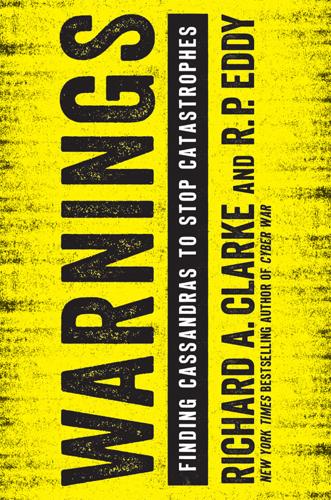
Warnings
by
Richard A. Clarke
Published 10 Apr 2017
Why Natanz is important, says Weiss, is that it showed how corrupting digital control system software allows a hacker to send the wrong signals to a programmable logic controller (PLC), the computer inside machines that controls what that machine does and how it does it. Digital control system software packages are running millions of PLCs throughout the U.S. infrastructure, not just in the power grid, but also in pipelines, refineries, and manufacturing facilities. Also known as industrial control systems or supervisory control and data acquisition (SCADA) systems, these software packages are ubiquitous. Versions of them now run our automobiles and control the medical devices in hospitals. And these SCADA systems are networked, sending diagnostic data to and receiving software updates from the manufacturer. “This is about a lot more than just hacking the power grid,” Weiss told us.
…
See also Financial crisis of 2008 weak AI and, 211–12 Storm, The (van Heerden), 51 Stuxnet, 291–92 Subprime mortgage crisis, 147–48, 153–54, 157, 162 Suh, Simona, 117–18 Sunni Muslims, 63 Sunshine Mine disaster of 1972, 128–29 Sun Yat-sen University, 340 SUNY Downstate Medical Center, 186 Super Aegis II, 214 Superintelligence, 201, 203–16 Supervisory control and data acquisition (SCADA), 292, 293 Surveillance, 359–60 “Swarm boats,” 214 Swine flu, 195–98, 218 Symposium Greek Restaurant (New York City), 237, 252–53 Syria, 57–74 Ford scenario, 65–66, 67–69 slippery slope of intervention, 70–74 Syrian Civil War, 60–61, 62–64, 72–73 Szostak, Jack, 327 Tactical nuclear weapons, 267–69 “Take It Easy” (song), 305 Tamiflu, 225, 233 Taubenberger, Jeffery, 222 Team Louisiana Report, 55 Technical expertise, 182–83 Technological evolution, 212–13 Technological singularity, 209 Tectonic plates, 80, 81 “Tells,” 25–27, 29–30, 36–37 Tenet, George, 8 Terminator, The (movie), 205 Tesla, 202 Tetlock, Philip, 13–15 Thierry de la Villehuchet, René, 102–3, 109, 113 “Tickling the dragon’s tail,” 83 Titan III rockets, 11–12 Tōhoku earthquake and tsunami of 2011, 81–82, 84–85 Tohoku Electric Power Co., 91 Tokyo Electric Power Company (TEPCO), 76–78, 86–98, 92–98 Toon, Owen, 273, 278–79 Trenberth, Kevin, 253 Troy, 1–2 Truman, Harry, 127 TTAPS, 273–77 Tunguska event, 301–3, 316 Tunisia, 57, 58 Turco, Richard P., 273, 276–77 Turkey, 62–63 Tyrosinemia, 332, 334 UBS, 149 Ukraine power grid cyber attack of 2015, 283–85, 287–88, 289, 291 Umea University, 329 Unemployment, 212–13 United Arab Emirates (UAE), 28 United Nations Climate Change Conference (2015), 247–50 United Nations Scientific Committee on the Effects of Atomic Radiation (UNSCEAR), 88 Universal hackability, 296–300 University of California, Berkeley, 13–14, 226, 327, 329 University of California, San Diego, 297 University of Colorado, 254, 328 University of Hawaii, 256, 315, 326 University of Iowa, 238, 243 University of Massachusetts, 296 University of Texas Southwestern Medical Center, 332 University of Tokyo School of Engineering, 92 Upper Big Branch Mine disaster, 121–22, 130–37 accident report, 133 Cassandra system, 137–38, 140–41 ventilation system, 133–37 Van Allen, James, 238 Van Heerden, Ivor, 41–55 background of, 41, 42–43 coastal restoration program, 43–44, 53 government failures and, 50–55 New Orleans Scenario, 45, 46–50, 52 resignation of, 44 Veracode, 295 Vinge, Vernor, 202 Vulnerabilities, and complexity, 366–67 Wall Street Journal, 115, 119, 154, 158, 163 Ward, Grant, 106 Warfare and AI, 199, 200, 213–14 Warning, the, 168, 170, 170–76 Warsaw Pact, 278 Washington Post, 243, 340 Waterman Award, 328–29 Watson (computer), 202, 209 Watson, James, 328 Watt, James, 174–75 Weak AI, 201, 210–13 Weapons of mass destruction (WMDs), 30–31, 358 Webster, Robert G., 223–25, 231–32, 235–36 Weidner, David, 158, 163 Weiss, Joe, 283–84, 286–89, 291–96, 298–300 West Antarctic Ice Sheet, 239, 246, 360 West Berlin, 25 Wharton School, 157–58 White, Ryan, 227, 384n White House National Warning Office, 355–56 Principals Committee, 29 Situation Room, 26–27, 181 Whitney, Meredith, 143–46, 148–54, 160–65 background of, 151, 153–54 Citigroup downgrade, 143–46, 154, 156–60, 164–65 Wide-field Infrared Survey Explorer (WISE), 315–16 Wiesel, Elie, 113 Wilson, E.

Solr in Action
by
Trey Grainger
and
Timothy Potter
Published 14 Sep 2014
Taking Solr to production 12.1. Developing a Solr distribution 12.2. Deploying Solr 12.2.1. Building your Solr distribution 12.2.2. Embedded Solr 12.3. Hardware and server configuration 12.3.1. RAM and SSDs 12.3.2. JVM settings 12.3.3. The index shuffle 12.3.4. Useful system tricks 12.4. Data acquisition strategies Update Formats, Indexing Time, and Batching Data Import Handler Extracting text from files with Solr Cell 12.5. Sharding and replication 12.5.1. Choosing to shard 12.5.2. Choosing to replicate 12.6. Solr core management Defining cores Creating cores through the Core Admin API Reloading cores Renaming and swapping cores Unloading and deleting cores Splitting and merging indexes Getting the status of cores 12.7.
…
You will probably want to set this limit permanently (running the command only applies to the current bash session) by setting it in a system-wide configuration such as /etc/security/limits.conf. You should ensure that your new file descriptor limit is sufficiently large that you will never run the chance of hitting it. 12.4. Data acquisition strategies So far, you have seen one way to post documents to Solr: through sending a document over HTTP to the Solr /update handler. We have utilized an included post.jar file as a convenience library for posting files containing Solr documents primarily in XML format, but under the covers it posts the contents of a file to Solr’s /update handler for you.
…
Content-Type header contributing patches coord factor (coord) <copyField> element, 2nd Core Admin API administration console creating cores CoreAdminHandler class core.properties file cos function cosh function CREATEALIAS command createNodeSet parameter cross-core joins cross-document joins CSS (cascading style sheets) CSV (comma-separated values) respose formats update handler support, 2nd CSVResponseWriter class custom hashing composite document ID limitations on overview targeting specific shard Czech language CzechStemFilterFactory D Damerau-Levenshtein distances Danish language data acquisition strategies batching documents DIH extracting text from files with Solr Cell Data Import Handler. See DIH. data model data redundancy data transformation functions data-config.xml file dataDir parameter <dataDir> element debug component, 2nd debug parameter def function DefaultSimilarity class, 2nd, 3rd defType parameter deg function Delete by id Delete by query Delete request, update handler deleteDataDir parameter deleteInstanceDir parameter deleting cores deletions, and segment merging DelimitedPayloadFilterFactory denormalization denormalized documents dependencies, in solrconfig.xml file dereferencing parameters df parameter DFRSimilarity class DFRSimilarityFactory class diacritcal marks, removing dictionary-based stemming DIH (Data Import Handler), 4th importing documents using indexing Stack Exchange indexing Wikipedia, 2nd direct routing Directory component DirectSolrSpellChecker dismax parameter dist function distanceMeasure parameter distrib parameter, 2nd distributed result grouping distributed searching distribution, creating own div function docfreq function [docid] field DocSet DocTransformer class document cache document router document transformers DocumentAnalysisRequestHandler class document-oriented Down state downloading Solr downtime DumpRequestHandler class duplicate documents skipping duplicate parameters reducing with parameter dereferencing durable writes Dutch language dynamic values, returning <dynamicField> element E e function Eclipse importing Lucene/Solr into running Solr from inside EdgeNGramFilter edismax parameter edit distance elasticity, SolrCloud ElisionFilterFactory, 2nd embedded Solr deployment within SolrJ application EmbeddedSolrServer class <enableLazyFieldLoading> element encoding HTML entities English language English Porter Stemmer EnglishMinimalStemFilter EnglishMinimalStemFilterFactory EnglishPossessiveFilter EnglishPossessiveFilterFactory entities, HTML escaping special characters eventual consistency eviction count ex local param excluded terms excludes, multiselect faceting execution order of speed of exists function exp function experimenting with relevancy [explain] field extensibility of Solr Extensible Markup Language.
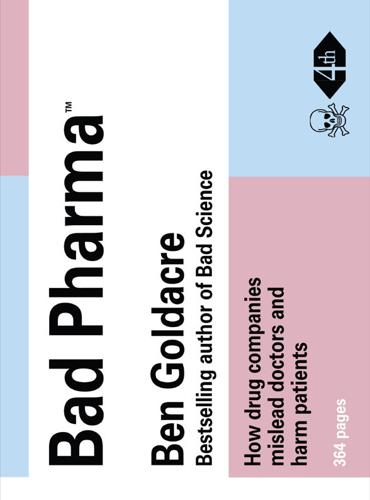
Bad Pharma: How Medicine Is Broken, and How We Can Fix It
by
Ben Goldacre
Published 1 Jan 2012
But in reality, as we have seen so many times before, this is a fake fix: the guidelines are hopelessly vague, and are exploited in ways that are so obvious and predictable that it takes only a paragraph to describe. The ICMJE criteria require that someone is listed as an author if they fulfil three criteria: they contributed to the conception and design of the study (or data acquisition, or analysis and interpretation); they contributed to drafting or revising the manuscript; and they had final approval on the contents of the paper. This sounds great, but because you have to fulfil all three criteria to be listed as an author, it is very easy for a drug company’s commercial medical writer to do almost all the work, but still avoid being listed as an author.
…
For example, a paper could legitimately have the name of an independent academic on it, even if they only contributed 10 per cent of the design, 10 per cent of the analysis, a brief revision of the draft, and agreed the final contents. Meanwhile, a team of commercial medical writers employed by a drug company on the same paper would not appear in the author list, anywhere at all, even though they conceived the study in its entirety, did 90 per cent of the design, 90 per cent of the analysis, 90 per cent of the data acquisition, and wrote the entire draft.91 In fact, often the industry authors’ names do not appear at all, and there is just an acknowledgement of editorial assistance to a company. And often, of course, even this doesn’t happen. A junior academic making the same contribution as many commercial medical writers – structuring the write-up, reviewing the literature, making the first draft, deciding how best to present the data, writing the words – would get their name on the paper, sometimes as first author.

Moon Rush: The New Space Race
by
Leonard David
Published 6 May 2019
No international hardware, software, or approvals, however, should be in the critical path to success. Commercial and international entities could take on a new role, shouldering the load of space activities that are not directly related to a geopolitical commitment to deep-space exploration. These new activities would include not only satellite communications but also data acquisition for space and terrestrial science, environmental monitoring, and space facility supply. Commercial and private entities also should take the lead in planetary pioneering, lunar and planetary base supply, space resource production, and settlement. So now what needs to happen to guarantee implementation of the president’s Space Policy Directive?
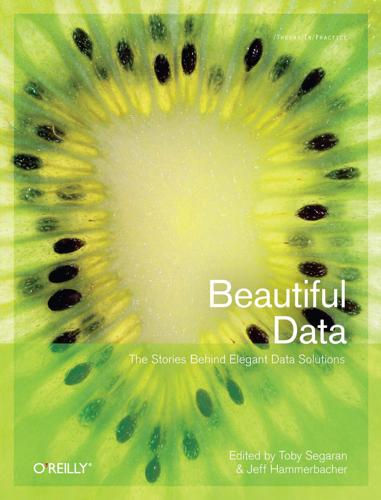
Beautiful Data: The Stories Behind Elegant Data Solutions
by
Toby Segaran
and
Jeff Hammerbacher
Published 1 Jul 2009
Unobtrusive Collaboration We also followed a common design guideline from the field of computer-supported cooperative work: collaborative features should not impede individual usage. As a result, we do not litter views with annotations by default. Rather, comments for a visualization are displayed unobtrusively on the right side of the screen, and graphical annotations are displayed “on demand” by the user. Voyagers and Voyeurs After these steps of data acquisition, design, and system implementation, we now had a running website and were ready to do “field tests” with users. We deployed the system in a set of user studies to observe how people would react to our system, what insights they might produce, and how we might improve the site. We invited 30 people into our lab to observe how they explored data with sense.us.
…
In addition to his work in the online world, Matt is also a professional children’s book author and illustrator; more than one million copies of his award-winning, critically acclaimed Babymouse graphic novels (published by Random House) are currently in print. J. M. Hughes is an embedded systems and software engineer who is particularly fond of real-time control, data acquisition, and image processing. From 2003 to 2007 he was responsible for the design, implementation, and testing of the surface imaging software on the Phoenix Mars Lander. He is currently working on the electronics and control software for a multiwavelength laser interferometer system that will be used to verify the alignment of telescope mirror segments for a NASA project.
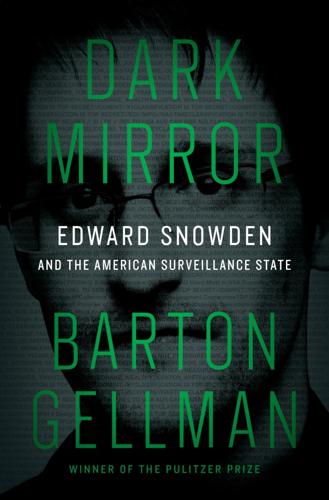
Dark Mirror: Edward Snowden and the Surveillance State
by
Barton Gellman
Published 20 May 2020
An American eagle as predator, the whole world its prey, was the sigil of an agency that could not even conceive of a public readership. I gave Baron the overview I wished I’d had when I first read these slides. Take a look farther down the cover page, I said, where “S35333” appears in smaller type. S stands for the Signals Intelligence Directorate, S3 for Data Acquisition, and each digit after that identifies a subordinate function. S353, the eagle people at Special Source Operations, pulled in monumental flows of information from the main trunk lines and switches that carry voice and data around the world. The owners of that infrastructure, mostly big corporations, were the “special sources.”
…
As a start-up back in 2007, PRISM had produced a grand total of three intelligence reports in its first month. Now, five and a half years later, it had become a principal engine of the U.S. surveillance machine. Rick was its collection manager and chief evangelist. The wire diagram of the NSA that year placed Rick’s operation within the unassumingly named subdirectorate of Data Acquisition, an arm of the Signals Intelligence Directorate. That is to say, Rick ran a spy shop, which is not a redundant thing to say in the context of the larger enterprise. The NSA did a whole lot of spying and a whole lot of other things, too. Great swaths of it, any one of which could swallow a lesser federal agency, took little or no part in the business of espionage.
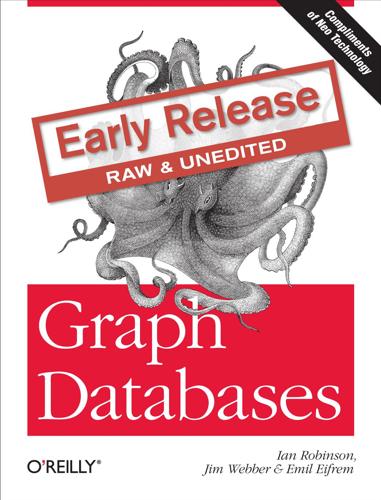
Graph Databases
by
Ian Robinson
,
Jim Webber
and
Emil Eifrem
Published 13 Jun 2013
In other words, as well as the value of specific properties changing, the overall structure of the elements hosting those properties can change as well. This commonly occurs for two reasons. The first is fast-moving business dynamics: as the business changes, so do its data needs. The second is that data acquisition is often an experimental affair: some properties are captured “just in case”, others are introduced at a later point based on changed needs; the ones that prove valuable to the business stay around, others fall by the wayside. Both these forms of velocity are problematic in the relational world, where high write loads translate into a high processing cost, and high schema volatility has a high operational cost.
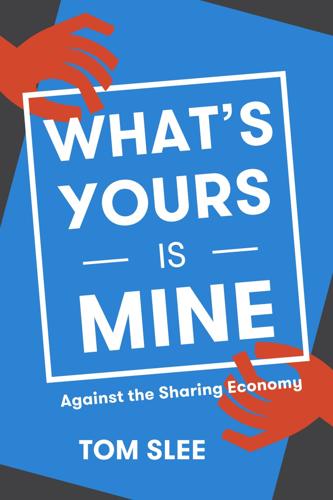
What's Yours Is Mine: Against the Sharing Economy
by
Tom Slee
Published 18 Nov 2015
Yet we should be careful about drawing general conclusions about the overall effect of any new technology: as criminologist Clive Norris has shown, license plate recognition has now become a way of tracking known individuals as they move around, and it is no surprise who is tracked more and who is tracked less.73 The underlying problem remains: there is still racism in the system, but it is now manifested in different ways. Data acquisition shifts the place where racism happens from the street to the database query. There is no evidence of intentional discrimination by the companies, and the patterns may change as the systems evolve, but we should be cautious about ascribing too much blame or credit to the companies involved. Money is one of the main points of contention for many jobs, but Uber is not just another employer.
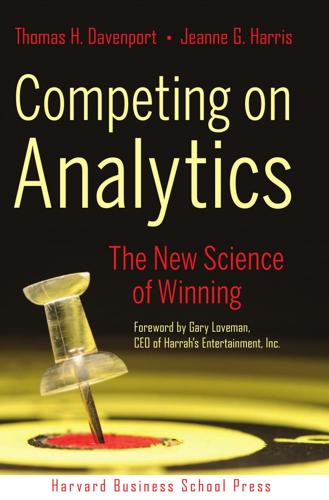
Competing on Analytics: The New Science of Winning
by
Thomas H. Davenport
and
Jeanne G. Harris
Published 6 Mar 2007
What Rules and Processes Are Needed to Manage the Data from Its Acquisition Through Its Retirement? Each stage of the data management life cycle presents distinctive technical and management challenges that can have a significant impact on an organization’s ability to compete on analytics.9 Data acquisition. Creating or acquiring data is the first step. For internal information, IT managers should work closely with business process leaders. The goals include determining what data is needed and how to best integrate IT systems with business processes to capture good data at the source. Data cleansing.

If Anyone Builds It, Everyone Dies: Why Superhuman AI Would Kill Us All
by
Eliezer Yudkowsky
and
Nate Soares
Published 15 Sep 2025
Mars Polar Lander: JPL Special Review Board, “Report on the Loss of the Mars Polar Lander and Deep Space 2 Missions” (NASA, March 22, 2000), ntrs.nasa.gov. 4. and thirty-one died: Serhii Plokhy, Chernobyl: The History of a Nuclear Catastrophe (Basic Books, 2018). 5. Viking 1 lander: D. J. Mudgway, “Telecommunications and Data Acquisition Systems Support for the Viking 1975 Mission to Mars,” University of Washington Department of Atmospheric and Climate Science (NASA, May 15, 1983), atmos.washington.edu. 6. neutron multiplication factor: Physicists write neutron multiplication factors as numbers rather than percentages. We use percentages to help highlight the difference between the neutron multiplication factor of 1.0006 achieved in Chicago Pile-1, and the prompt criticality threshold of 1.0065, which are tricky to distinguish as factors and easier to distinguish as percentages.

The Filter Bubble: What the Internet Is Hiding From You
by
Eli Pariser
Published 11 May 2011
When a clothing company determines that knowing your favorite color produces a $5 increase in sales, it has an economic basis for pricing that data point—and for other Web sites to find reasons to ask you. (While OkCupid is mum about its business model, it likely rests on offering advertisers the ability to target its users based on the hundreds of personal questions they answer.) While many of these data acquisitions will be legitimate, some won’t be. Data are uniquely suited to gray-market activities, because they need not carry any trace of where they have come from or where they have been along the way. Wright calls this data laundering, and it’s already well under way: Spyware and spam companies sell questionably derived data to middlemen, who then add it to the databases powering the marketing campaigns of major corporations.

Whiplash: How to Survive Our Faster Future
by
Joi Ito
and
Jeff Howe
Published 6 Dec 2016
But Stuxnet, as this particular sample was called, was a different animal. It was the first time anyone had seen malware that targeted the customized software that is used to control industrial machineries such as turbines and presses. After months of relentless analysis it became apparent that the code targeting these supervisory control and data acquisition (SCADA) systems had a very specific purpose: to disrupt the process of uranium enrichment in nuclear facilities. When the centrifuges connected to the system met certain conditions, the malware would forcibly alter the rotation speed of the motors, ultimately causing the centrifuges to break years before their normal life span.
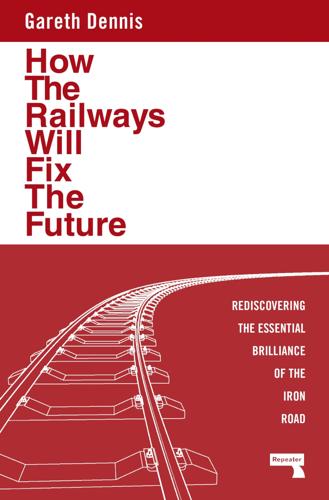
How the Railways Will Fix the Future: Rediscovering the Essential Brilliance of the Iron Road
by
Gareth Dennis
Published 12 Nov 2024
Traction power and distribution systems (the infrastructure that powers trains) also uses FTNx to enable operation of electrification from virtual electrical control rooms integrated into the rail operating centres, unifying train control and traction control under one roof. This approach continues to be rolled out to legacy electrification systems, but new systems incorporate SCADA — supervisory control and data acquisition, the system that controls traction power and distribution — by default. The increasingly ungainly pile of use-cases for interconnected systems doesn’t stop there. Remote condition monitoring of assets, CCTV, passenger and freight customer information systems, even lighting controls can all be pinned into IP networks.
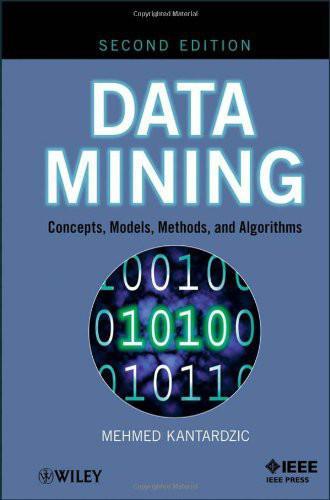
Data Mining: Concepts, Models, Methods, and Algorithms
by
Mehmed Kantardzić
Published 2 Jan 2003
The data-mining process. 1.4 LARGE DATA SETS As we enter the age of digital information, the problem of data overload looms ominously ahead. Our ability to analyze and understand massive data sets, as we call large data, is far behind our ability to gather and store the data. Recent advances in computing, communications, and digital storage technologies, together with the development of high-throughput data-acquisition technologies, have made it possible to gather and store incredible volumes of data. Large databases of digital information are ubiquitous. Data from the neighborhood store’s checkout register, your bank’s credit card authorization device, records in your doctor’s office, patterns in your telephone calls, and many more applications generate streams of digital records archived in huge business databases.
…
In engineering matters, they usually arise with either sensor-based monitoring, such as telecommunication control, or log-based systems monitoring. In scientific research they appear, for example, in spatial missions or in the genetics domain. In health care, temporal sequences have been a reality for decades, with data originated by complex data-acquisition systems like electrocardiograms (ECGs), or even simple ones like measuring a patient’s temperature or treatment effectiveness. For example, a supermarket transaction database records the items purchased by customers at some time points. In this database, every transaction has a time stamp in which the transaction is conducted.
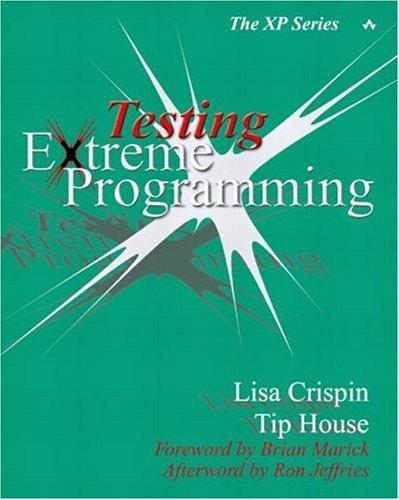
Testing Extreme Programming
by
Lisa Crispin
and
Tip House
Published 15 Apr 2003
XP may be self-correcting in terms of bringing these things out in the open eventually, but clearing them up earlier allows for more velocity later on. Specifying acceptance tests up front with the stories is really a type of test-first development. It helps avoid some types of defects altogether and gives the team a head start on test automation and test data acquisition. This allows functional testing to keep up with the programmers at crunch time, when the end of the iteration approaches. Including acceptance test tasks in the stories and enabling accurate story estimates makes release and iteration planning more accurate and provides time to automate the tests, which pays off many times over in later iterations.

The Secret Lives of Bats
by
Merlin Tuttle
We make nightly recordings and would be happy to show them to you.” We met the next morning. I had been pointing out for years that these bats were likely having a major impact in keeping insect populations in check, but I hadn’t even dreamed that we might someday have proof that they were preferentially feeding on crop pests. Jim introduced me to his data acquisitions manager, Bill Runyon, and they jointly offered to collaborate. I was thrilled and immediately called free-tailed bat researcher Gary McCracken. I said, “You’re not going to believe the neat research opportunity I’ve just discovered!” When I described the radar images and Jim and Bill’s offer of help, he joined in my enthusiasm, promptly flying down to meet them.

Strategy Strikes Back: How Star Wars Explains Modern Military Conflict
by
Max Brooks
,
John Amble
,
M. L. Cavanaugh
and
Jaym Gates
Published 14 May 2018
The weapon, the Stuxnet computer virus, was designed not only to damage the centrifuges Iran used in its enrichment efforts but also to hide from the centrifuge operators that there was anything amiss.5 The worm virus was introduced into the closed networks through the laptops and personal electronic devices of civilian scientists working on the program. Once it was embedded in the supervisory-control and data-acquisition programs, it began to do its damage, while reporting to the system administrators that the system was performing without any issues. The employment of this new weapon was, based on the assessed aim, successful; however, the unintended consequence was that this new weapon was now also in an adversary’s hands (and due to a bug in the virus’s code that let it spread beyond the enrichment facility, in the hands of the wider public as well).

@War: The Rise of the Military-Internet Complex
by
Shane Harris
Published 14 Sep 2014
“We told companies what to be on the lookout for. What e-mails not to open. We could tell them ‘You’re next on the list.’” Among the most worrisome people on those lists were employees of American oil and natural gas companies. These businesses own and operate major refineries and pipelines that are run by SCADA (supervisory control and data acquisition) systems, the same kinds of devices that the NSA attacked in the Iranian nuclear facility to make centrifuges break down. Chinese attempts to penetrate oil and natural gas companies “were never-ending,” the former official says. The campaign reached a fever pitch in the spring of 2012, when hackers penetrated the computer networks of twenty companies that own and operate natural gas pipelines.

The Rise of Superman: Decoding the Science of Ultimate Human Performance
by
Steven Kotler
Published 4 Mar 2014
By the time the serotonin has arrived the state has already happened. It’s a signal things are coming to an end, not just beginning.” These five chemicals are flow’s mighty cocktail. Alone, each packs a punch, together a wallop. Consider the chain of events that takes us from pattern recognition through future prediction. Norepinephrine tightens focus (data acquisition); dopamine jacks pattern recognition (data processing); anandamide accelerates lateral thinking (widens the database searched by the pattern recognition system). The results, as basketball legend Bill Russell explains in his biography Second Wind, really do feel psychic: Every so often a Celtic game would heat up so that it would become more than a physical or even mental game, and would be magical.
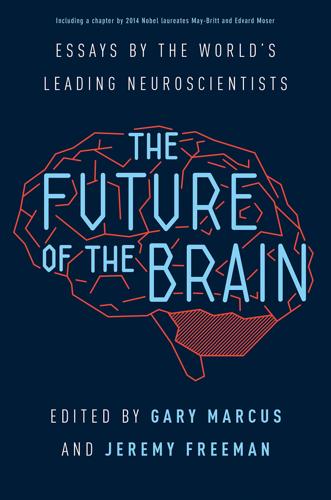
The Future of the Brain: Essays by the World's Leading Neuroscientists
by
Gary Marcus
and
Jeremy Freeman
Published 1 Nov 2014
In some domains, this rather static strategy—collect data first, analyze later—may be both reasonable and profitable. Take, for example, the problem of segmenting neurons from anatomical images to identify connectivity. Achieving that goal will demand powerful algorithms, but the goal itself is clear, so the analysis can proceed somewhat independently of data acquisition and experiment. But the more we stray from such well-defined problems, the less realistic that sort of static strategy may be. In most cases, we do not quite yet know which data we want to collect. Even if it is clear which kinds of measurements we want to make (for example, whole-brain calcium imaging of the larval zebrafish, two-photon imaging of multiple areas of mouse cortex), it is not clear which behaviors the organism should be performing while we collect those data, or which environment it should be experiencing.

Black Code: Inside the Battle for Cyberspace
by
Ronald J. Deibert
Published 13 May 2013
The article’s author, former United Press International journalist Richard Sale, stated that the double agent was probably a member of the Iranian dissident group, the Mujahedeen-e Khalq (MEK), a shadowy organization with Israeli government connections that is believed to be behind the assassinations of key Iranian nuclear scientists. Stuxnet was specifically designed to infect only certain types of supervisory control and data acquisition (SCADA) systems used for real-time data collection, and to control and monitor critical infrastructure – hydro-electrical facilities, power plants, nuclear enrichment systems, and so on. The programs used to control the physical components of SCADA systems are called programmable logic controllers (PLCS), and Stuxnet was developed in such a way as to target only two types of PLC models controlled by the Siemens Step 7 software –S7–315 and S7–417 – both of which are used in the Iranian nuclear centrifuges.
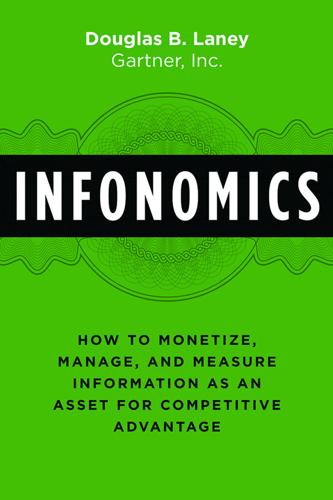
Infonomics: How to Monetize, Manage, and Measure Information as an Asset for Competitive Advantage
by
Douglas B. Laney
Published 4 Sep 2017
. • Utility of information for a range of purposes • Linked data, metadata, and master data measures • Ease of integrating new types of data or changing dimensions Costs The cost of operating the supply chain processes. This includes labor costs, material costs, management, and transportation costs. A typical cost metric is cost of goods sold. • Data acquisition cost • Data management costs • Data delivery costs (Each include labor and technology related costs) Asset Management Efficiency (Assets) The ability to efficiently utilize assets. Asset management strategies in a supply chain include inventory reduction and in-sourcing versus outsourcing.

Data Action: Using Data for Public Good
by
Sarah Williams
Published 14 Sep 2020
CDR data has also been used to track malaria and Ebola, among other infectious diseases.43 Although obtaining CDR data is really useful for natural disasters, companies often need to negotiate their terms in real time, and this is when ethical issues can arise: the telecoms often give out the data without considering the privacy of those in the data, as they believe their purpose is more important. McDonald mentioned this in his critique of the Ebola crisis. The Senegal Orange Challenge was held after the Ebola disaster had abated, which can also provide some insights, but having it during a crisis would certainly provide a great benefit as well. The timeliness of data acquisition is important, and this is why McDonald believes that pre-negotiated license terms are essential for using data during disasters. Matt Stempeck, Director of Civic Technology at Microsoft, argues that the provision of data can make use of the International Charter on Space and Major Disasters (1999), which provides a clear protocol for satellite companies to give away data during a disaster.
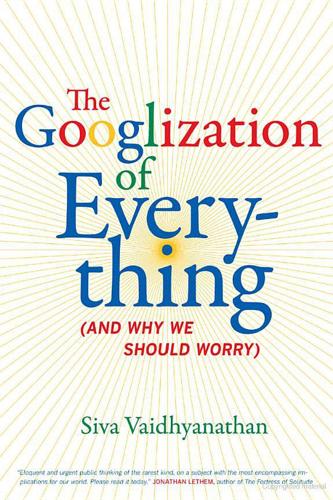
The Googlization of Everything:
by
Siva Vaidhyanathan
Published 1 Jan 2010
So the broader Google’s reach becomes—the more it Googlizes us—the more likely it is that even informed and critical Internet users will stay in the Google universe and allow Google to use their personal information. For Google, quantity yields quality. For us, resigning ourselves to the Google defaults enhances convenience, utility, and status. But at what cost? T H E P ROBL EM WI T H P RI VACY Google is far from the most egregious offender in the world of personal data acquisition. Google promises (for now) not to sell your data to third parties, and it promises not to give it to agents of the state unless the agents of the state ask for it in a legal capacity. (The criteria for such requests are lax, however, and getting more lax around the world.) But Google is the master at using information in the service of revenue generation, and many of its actions and policies are illustrative of a much larger and deeper set of social and cultural problems.
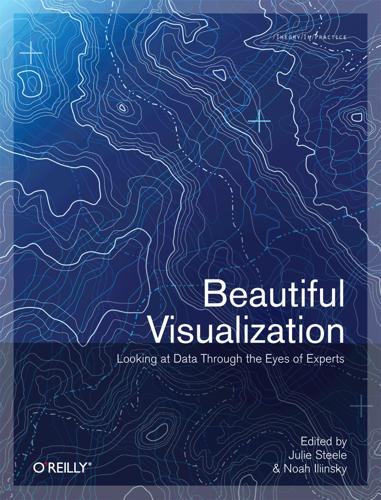
Beautiful Visualization
by
Julie Steele
Published 20 Apr 2010
The police are keen on having the autopsy done as soon as possible. The CSI guys try to close the crime scene investigation before the autopsy takes place. Postmortem imaging solves this problem. A preliminary report from the postmortem CT examination makes it possible to preserve the body in the cold storage room. Data Acquisition The traditional physical autopsy at CMIV is extended by adding the CT and MRI as VA activities. In most cases, the forensic pathologist comes to the crime scene and oversees the handling of the human cadaver, which is placed in a sealed body bag before being transported to the forensic department and put in cold storage.
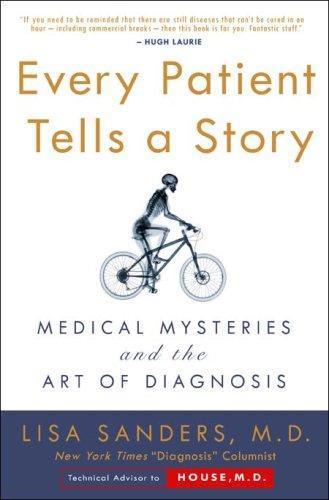
Every Patient Tells a Story
by
Lisa Sanders
Published 15 Jan 2009
And he found residents almost universally grateful when he showed them a better way of doing it. “The physical exam just becomes a much more useful tool when you use it correctly.” In a paper first promulgating the use of direct observation as a tool in evaluating residents, Eric wrote: “Direct observation of trainees is necessary to evaluate the process of data acquisition and care. A trainee’s ability to take a complete history; perform an accurate, thorough physical examination; communicate effectively; and demonstrate appropriate interpersonal and professional behavior can best be measured through the direct sampling of these clinical skills.” It seems obvious and yet it’s been a remarkably hard sell—not just to residents but to training programs as well.
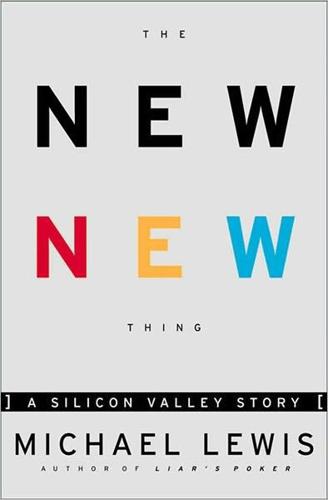
The New New Thing: A Silicon Valley Story
by
Michael Lewis
Published 29 Sep 1999
If it wasn't the engine and it wasn't the sensor, then the problem lay somewhere between the sensor and the computers. The closer Robert came to the computers, the less sure of himself he became. "I've got to work out how the system is getting its informationhow the PLCs sends it to SCADA," said Robert. SCADA was an acronym for the hopeful title they'd given to their software: Superior Control and Data Acquisition. SCADA was what Steve and Lance and Tim and Clark had spent most of their time writing. It picked up the digitized information from all over the boat and manipulated it in any way it needed to be manipulated. Steve and Robert left the engine room and made for the neighboring computer room, to find out what SCADA had to say.
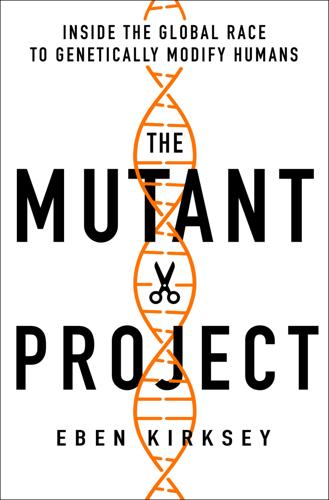
The Mutant Project: Inside the Global Race to Genetically Modify Humans
by
Eben Kirksey
Published 10 Nov 2020
A bundle of prenatal exam instructions—brochures in pink, purple, green, and light blue—were neatly arranged in a plastic display next to a hand sanitizer dispenser. Circular glass pods with translucent curtains—Specialist Rooms 1 and 2—were down one hallway along with the fetal heart monitoring room, the health data acquisition center, a midwife consultation office, and the blood sampling window. A sign on the wall warned patients not to offer doctors “red packets”—envelopes with money, bribes for better care. While I waited, parents with a one-year-old baby paid a social visit to the doctor, a kind woman in her fifties.

A Man on the Moon
by
Andrew Chaikin
Published 1 Jan 1994
For a glimpse of its cold, eerie light astronomers will travel halfway around the world, but Mattingly now saw the corona as only the space traveler could, in the last minutes of orbital night, while the sun still hid below the unseen horizon. It was Mattingly’s task to capture the corona on film using the Data Acquisition Camera (DAC). And the tape—that was a matter of efficiency. Mattingly knew the inside of the command module so well that even in pitch darkness he could find his way around. And he knew that if he flicked on a flashlight to glance at a checklist, even for a moment, he’d ruin his night vision.
…
TV transmission from, 286-87, 290 urine collector for, 328-29 zero gravity in, 292, 319, 328 Apollo 14, 337-79, 597-98 abort procedure for, 357 Antares in, 353-54, 357-59, 367, 368-69, 370, 375 Apollo 13 vs., 346-49, 351, 361 Apollo 15 vs., 413, 426 Apollo 16 vs., 460, 470 backup crew for, 368-69, 370, 377, 449, 502, 503 Cernan in, 354, 368-69, 370, 377 checklists for, 360 communications of, 361, 362 crew morale in, 350-51, 357 docking in, 353-54, 460 flight plan for, 361-62 Fra Mauro as destination of, 317, 351,356,359-60, 368, 370, 371, 453, 454, 466, 470, 635, 636 geological information from, 361, 364-67, 371-75, 396, 452 Haise in, 358, 369-71 Hycon camera used in, 351, 361-62, 364, 466 Kitty Hawk in, 350, 353-54, 360- 64, 376-77 liftoff of, 352-53 lunar landing by, 351, 357-59, 368 lunar observations in, 362-64 lunar orbit of, 360-64, 378 Lunar Orbit Insertion (LOI) of, 361 media coverage of, 355-56 mission emblem for, 350, 368-69 Mitchell as lunar module pilot for, 346, 351-78, 549, 580, 629-30, 634, 636 Mitchell’s ESP experiment on, 355, 356-57, 378, 556-57, 582, 634-35 Mitchell’s spiritual experience in, 376-77, 556 music on, 361 photographic mission of, 351, 361- 63, 377, 636 Powered Descent in, 357-59, 413, 460, 635 quarantine for, 377-78 rendezvous in, 354, 376 Roosa in, 343-46, 350-55, 360-364, 376-77, 378, 434, 466, 549, 551 Saturn V booster for, 352, 353 Shepard in, 337-43, 345-78, 564, 573, 632, 634, 636, 645 simulation for, 348, 358 Slayton in, 345, 346-48, 549 sleeping in, 355, 360, 368 Solo Book for, 361, 364 space program and, 349, 350 SPS engine for, 361 TLI for, 353 training for, 348-52 TV transmissions from, 375 zero gravity in, 355 Apollo 14 moonwalks, 359-60, 364-75 at Cone crater, 351, 359, 360, 368, 369-75, 377-78, 396, 426, 453 extension for, 373, 374 first session for, 364-67 geologic traverse in, 368-75 g-forces in, 375 landmarks for, 370-72 modular equipment transporter (MET) in, 368, 369, 370, 373, 374, 375 rock samples in, 364-67, 369, 370, 377, 453, 470 second session for, 368-75 Apollo 15, 411-51, 598 Allen in, 407, 415, 419, 421, 427-429, 431,433, 437-38, 439, 441-42, 444 Apollo 14 vs., 413, 426 Apollo 16 vs., 464, 468, 469, 474, 475, 478, 479, 481 Apollo 17 vs., 518, 521, 523, 536 astronauts’ wives and, 416-17 backup crew for, 284, 397, 400-401, 407-8 debriefings for, 447, 448 Endeavour in, 412, 417, 433, 434-436, 448 Falcon in, 402, 406, 412-18, 421, 423, 426, 432, 433, 440, 442, 444, 449 and first-day covers stamp deal, 445, 496-98, 549,551,640, 642, 646 geological information from, 414-15, 453, 474 geological training for, 399-400, 414, 424-25,434-35, 448, 639 Griffin in, 408, 428, 440 Hadley Rille as objective of, 402-3, 406, 408,412-15,419, 420, 423 Irwin in, 400, 403-4, 405, 408, 409-51,497, 549 Irwin-Scott relationship in, 404, 638 liftoff of, 417 lunar observations in, 434-35, 506, 507 lunar orbit of, 412, 433, 434 McDivitt in, 406, 407, 440, 442 orbiting lunar science platform for, 434, 453 parachutes of, 444 Powered Descent in, 406-7, 412-14 preflight training for, 416-17 quarantine for, 444 satellite released in, 434 Saturn V booster for, 417 Scott in, 398, 399-400, 403, 404-51,496-98, 549 Silver in, 398-99, 400, 404-8, 410, 414, 415, 419-21, 424-25, 428, 432, 448 simulation for, 407, 412, 413, 416, 424 Slayton in, 416, 428, 443, 497 sleeping in, 414, 415-16 space program and, 448-51 splashdown of, 444-48 success of, 448-49 trajectory for, 406-7, 412-13 Worden in, 400, 409, 416-17, 433, 434-36, 444-48, 497, 506, 507, 549 Apollo 15 moonwalks, 417-44 Apollo Lunar Surface Experiment Package (ALSEP) in, 422-23, 432,436, 438, 453, 468 backpacks for, 402, 426-27, 433 boulders examined in, 421-22, 427, 429, 432 cameras for, 407 circadian rhythms and, 414 deep core sample taken in, 432 — 433, 438-40 drill used in, 422-23, 432-33, 438-40 electrolyte solution for, 446-47, 475 exhaustion from, 423-24, 438, 446-47 exploration in, 409-10, 411-12, 417 first session for, 417-23 Galileo’s experiment repeated in, 442-43, 640 Genesis Rock found in, 430-31, 437, 453, 481, 558, 645 geological information from, 402, 405-6,418,419-21,423, 424-444 geologic traverses in, 417-18, 424, 433, 440-42 g-forces in, 415 gloves for, 422-23 at Hadley Delta mountain, 403, 412,414,415,424-29, 453, 466, 478, 479, 518, 521 at Hadley Rille, 438, 440-42, 450, 488 hammer used in, 421, 423, 443, 638 landmarks for, 412-15, 419 lunar maps for, 407, 420 Lunar Roving Vehicle in, 402, 406, 407,417-18, 422, 424, 425-27, 429, 436, 441,442, 443, 449, 639 at North Complex craters, 415, 438, 440, 442 oxygen supply for, 422, 426-27 penetrometer used in, 432 rake used in, 432, 441 reconnaissance in, 414-15 Apollo 15 moonwalks (cont.) rock samples in, 420-22, 423, 428-32, 433, 453, 523 second session for, 423-33 space suits for, 402, 415-16, 422-23, 426-27, 433, 446 at Spur crater, 427, 429-32, 453, 523, 558 Surface Geology Team for, 420 third session for, 438-44 timeline of, 432, 440, 442 TV transmissions from, 419, 421, 443 walkback limit for, 426-27, 431, 432 Apollo 16, 452-94, 598-99 Apollo 13 vs., 459, 468 Apollo 14 vs., 460, 470 Apollo 15 vs., 464, 468, 469, 474, 475, 478, 479, 481 backup crew for, 549 Casper in, 456-62, 481-85, 491- 492, 494 checklists for, 484 “circ” burn in, 458-59 crew morale in, 473, 475-77 Data Acquisition Camera (DAC) in, 483-84 Descartes highland as destination of, 364, 452-56, 463, 464, 466, 474, 479, 480, 481, 489, 490, 491,492-93, 507 descent orbit of, 456, 459 Duke in, 456, 458, 459, 460, 462-91,492, 493-94 earthrise witnessed by, 484 England in, 468, 469, 472-74, 475, 476, 480, 481, 488, 489, 490-91 flight plan for, 484-85, 490 geological information from, 394, 454-56, 463, 464-91 gimbal motors’ problem in, 456 — 460, 462, 484 Kraft in, 461, 462, 478 lunar observations in, 482-85, 493, 494 lunar orbit of, 483, 484, 490, 493, 494 McDivitt in, 454, 459, 460-62, 641 Mattingly in, 456-62, 464, 481 — 485, 490-92, 493, 494, 641 media coverage of, 490 Muehlberger in, 464-67, 470, 471, 472, 474, 475, 479, 481, 486-90 music on, 484 onboard computers for, 459 orange juice for, 475-76 Orion in, 456, 458, 459, 460, 469, 472, 474, 475 photographic mission of, 482-84 Powered Descent in, 456, 459, 462-63, 641 Saturn V booster for, 457, 461 simulation for, 457 sleeping in, 476-77, 483 solar corona observed in, 483-84 SPS engine for, 456-60, 462, 484, 641 telemetry from, 459, 461 trajectory of, 454-55 TV transmissions from, 467, 469, 471,487-88, 490 Young in, 456, 458, 460, 462-91, 493-94 Apollo 16 moonwalks, 469-90 Apollo Lunar Surface Experiment Package (ALSEP) in, 467-69, 470, 473, 477-78, 493-94 breccias found in, 470, 472, 474, 489-90, 492 at Cayley Plains, 468, 469, 470, 472, 474, 479, 481,483, 487, 490, 491 at Cincos craters, 479-80 extensions for, 487, 489 first session for, 469-74 at Flag crater, 470—71 geologic traverses in, 469-74 g-forces in, 469 House Rock found in, 488-90 Langseth’s heat-flow experiment in, 467-69, 473, 475, 477-78 Lunar Roving Vehicle in, 467, 472, 478, 479, 486, 487, 489 magnetometer in, 472 at North Ray crater, 486, 487-90 photomaps for, 466, 469 at Plum crater, 471-72 rock samples in, 463, 464, 470, 471-72, 474, 479-81,488-91, 523 second session for, 478-81 seismometer placed in, 493-94 at South Ray crater, 474, 479-481, 487 at Stone Mountain, 466, 475, 478-81, 521 Surface Geology Team for, 465, 471, 474, 479, 481, 490 third session for, 487-92 timeline of, 464-65 volcanic evidence in, 452, 455, 465, 466, 470, 473-75, 481, 483, 487, 490-91,492-93 walkback limit for, 489 Apollo 17, 495-551, 599 abort procedure for, 498, 499 America in, 498, 534-35, 545, 547, 548 Apollo 10 vs., 501-2, 511, 512 Apollo 11 vs., 511 Apollo 15 vs., 518, 521, 523, 536 backup crew for, 549-50 Cernan in, 449, 451, 498-505, 506, 508-47, 550, 566, 567-68, 643 Cernan-Schmitt relationship in, 510-14, 536, 636-37, 647 Challenger lunar module in, 504, 508-9, 514-15, 517, 519, 535, 540, 543-45, 546 checklists for, 520-21, 533 crew assigned to, 449-51 crew morale in, 503-5, 523-24 earthrise viewed from, 545-46 Evans in, 451, 498, 499-501, 531-35, 545, 548-50, 644 as final mission, 496, 504-5, 546, 547-48, 550-51 geological information from, 401, 505-7, 509-31 Gordon and, 449, 451, 498, 515 liftoff of, 495-96 lunar observations in, 534-35, 545, 644 Lunar Orbit Insertion (LOI) of, 511 media coverage of, 532 Muehlberger in, 522-23, 525, 527, 537, 540, 541 music on, 517 nighttime launch for, 495, 498, 500-501 Nixon and, 546, 645 onboard computers of, 508 Parker in, 511, 514, 520, 522, 525, 528, 530 Powered Descent in, 508-9, 643 rendezvous in, 544-45 Saturn V booster for, 498, 499, 500-501, 504, 511 Schmitt in, 397, 401, 449, 450-451,498, 500, 503-48, 550, 643 Silver in, 522-24, 527, 528, 644 Slayton in, 449, 450, 451, 502, 533, 550 sleeping in, 517, 540 space program and, 496-98, 504- 5, 509, 530-31, 534, 543, 546, 547-48, 550-51 splashdown of, 550-51 SPS engine for, 534, 547 Taurus-Littrow as destination of, 505- 8, 512, 516, 517, 518, 522, 525, 526, 529, 530, 539, 540, 543, 547 trajectory of, 507-8 TV transmissions from, 514, 530, 537-38, 543, 547 weather observations in, 512, 535 Apollo 17 moonwalks, 509-46 Apollo Lunar Surface Experiment Package (ALSEP) in, 513, 541 breccias collected in, 538-39 core samples in, 513, 515, 516, 525, 528-29 earth as viewed in, 510, 511-13 exploration in, 519-20, 540, 546 first session for, 509-14 Apollo 17 moonwalks (cont.) geologic traverses in, 513, 514, 515, 518-30, 535-44 g-forces in, 517, 541, 567 hammer used in, 542 Langseth’s heat-flow experiment in, 513 at Lara crater, 524-25, 526 Lunar Gravimeter placed in, 513 Lunar Roving Vehicle in, 511, 513,515,525,530,537,539, 541, 542, 543 at Nansen crater, 520-21, 527, 528, 541 at North Massif, 536-41 orange soil discovered in, 527 — 530, 644 oxygen supply for, 513, 514 photographic mission of, 520, 527, 530, 539-40 at Poppy crater, 508 rock samples in, 518, 521-23, 525, 538-39, 542, 543, 544 at Sculptured Hills, 536, 541 second session for, 517-31 at Shorty crater, 525-30, 644 at South Massif, 517-22 space suits for, 542 Surface Geology Team for, 522 — 523, 525, 537, 540-41 third session for, 531, 535-44 timeline of, 504, 515, 521, 525, 541 volcanic evidence in, 506, 515, 527-30 walkback limit for, 519-20, 528, 644 Apollo 18, 283, 284, 401-2, 503, 506, 541, 578, 643 Apollo 19, 283, 506, 578, 643 Apollo 20, 232, 283, 285, 350 Armstrong, Jan, 19, 21, 161, 181, 202, 568 Armstrong, Neil, 138, 160-63, 168-69, 175, 586, 619-20 Aldrin and, 147-50, 173, 227, 569, 570, 618 Apollo 8 and, 82 in Apollo 11, 137, 138-39, 147- 150, 166, 183, 184-227, 250-251, 255, 291, 323, 390-91, 580,617-18, 623-24, 647 Apollo 17 and, 498, 504 Collins and, 168, 568 as first man on moon, 138, 147 — 150, 205-11,221,227, 569-70, 618 in Gemini project, 22, 51-52, 168-69, 170 geological training of, 179, 390 — 391 post-Apollo experience of, 565, 568-70, 582 as test pilot, 32, 138, 160-63, 165, 168, 169 Astronaut Office, 28, 30, 137, 282, 304, 449, 496 Shepard as head of, 44-45, 245, 291, 342-43, 350, 388, 389, 396-97, 611 astronauts, 4-5, 27-55, 114 aerospace design and, 16, 27, 31 biographical information on, 585-94 competition among, 29, 35, 42-49, 64 deaths of, 11-26, 51, 247-48, 443 as former test pilots, 21, 32, 34, 45, 47, 54, 115 geological training for, 389-410 income and perks of, 32, 41 lunar landing as goal of, 29-30, 54-55 marriages of, 349-50 medical evaluation of, 46-47 post-Apollo experiences of, 553 — 583 public image of, 349-50, 497-98 risks taken by, 20-23, 26, 30 rookie, 29, 32-37,41,43-49, 50, 52-53 scientists vs., 386-88, 389 selection process for, 1-7, 33-34, 35, 39-40, 50, 51, 136, 137-38, 176, 284, 342, 346-48 training of, 29-37, 45, 49 veteran, 28, 32-35, 37, 41 wives of, 64, 114, 115, 349-50, 416 see also individual astronauts Babbitt, Don, 17 Bales, Steve, 191, 194, 195, 196 Bassett, Charlie, 21, 45, 48, 51, 65 Bean, Alan, ix, 48, 243-48, 391, 586 in Apollo project, 53, 134, 245 — 248 Apollo 1 disaster and, 19 in Apollo 12, 234-41, 243-84, 371, 391, 580-81 Apollo 15 and, 448 Conrad and, 245, 246, 247, 248, 281 in Fourteen, 41, 48, 50, 51, 53, 245 as fourth man on moon, 263 post-Apollo experience of, 580— 583 Bean, Sue, 19 Bennett, Floyd, 413 Benware, Betty, 296, 310 Benware, Bob, 296 Beregovoy, Georgi, 77, 634 Bergman, Jules, 297 Berry, Chuck, 19, 98-99, 182-83, 245, 288, 307, 333, 334, 446 Bohm, David, 557 Borman, Frank, 32, 53, 60-61, 77-78, 123, 124, 125, 133, 586-87 Apollo 1 disaster and, 60, 61, 124, 611, 613 in Apollo 8, 60-62, 64, 65, 66-67, 70-71, 73, 74, 75, 77-134, 290, 389-90,614,615, 621-22 Apollo 11 and, 128, 137-38, 290 in Gemini project, 42, 49, 50, 62, 67-68, 80, 103, 128 at North American plant, 27, 60, 61, 124, 613-14 post-Apollo experience of, 291, 562-63 Borman, Susan, 122-25, 127, 133, 310, 311, 647 Bostick, Jerry, 191 Boudette, Gene, 466, 470, 493 Bourgin, Simon, 616 Brand, Vance, 317, 324, 325, 401 Bush, George, 577 Carlton, Bob, 191 Carpenter, Scott, 35 Carr, Jerry, 104, 106, 110, 115, 125, 202 Apollo 12 and, 238, 240-41, 260 Carrying the Fire (Collins), 568 Cemanr Barbara, 499 Cernan, Gene, 51, 147, 505, 587, 647 Apollo 1 disaster and, 15, 26 in Apollo 10, 136, 150-51, 152, 155-59, 165, 191, 250, 501-2, 511, 512 Apollo 14 and, 354, 368-69, 370, 377 in Apollo 17, 449, 451,498-505, 506, 508-47, 550, 566, 567-68, 643 as eleventh man on moon, 509 in Gemini project, 51, 156, 501, 502, 614 in helicopter crash, 449, 640-41 as last man on moon, 544 post-Apollo experience of, 565 — 568, 582 Schmitt and, 510-14, 536, 636-637, 647 Cernan, Tracy, 500, 501-2, 508, 540 Chaffee, Martha, 19 Chaffee, Roger, 12, 14, 17, 19, 21-26, 30, 637 Challenger disaster, 565, 569, 573 — 574 Charlesworth, Cliff, 208 Chauvin, Skip, 235, 236 Clarke, Arthur C., Ill, 291, 616, 624 Clinton, Bill, 577 Cohen, Aaron, 574 Collins, Mike, 45, 53, 65, 587 Apollo 1 disaster and, 19 Apollo 8 and, 86, 87, 89, 91, 98, 117, 126, 127, 174 in Apollo 11, 138, 148, 173, 174- Collins, Mike (cont.) 176, 177, 184-90, 192, 202, 219-27, 250, 395, 621 Armstrong and, 168, 568 in Gemini project, 48-49 post-Apollo experience of, 560 Collins, Pat, 176, 182, 202 Columbia space shuttle, 573 command module, Apollo: abort handle in, 73, 85, 87 Block I prototype for, 16, 17, 608 Block II prototype for, 16, 27, 60, 61, 608 design of, 12, 13-15, 16, 17, 23-25, 27, 60, 61, 73, 74 fireproofing of, 61, 82 hatch for, 14, 17, 24-25, 609-10 testing of, 60-62 Conrad, Charles “Pete,” ix, 3-7, 27, 29-37, 48, 54-55, 192, 587-88 Apollo 11 and, 136-37 in Apollo 12, 234-43, 246, 247, 248-84, 323, 351, 371, 391 Apollo 13 and, 296, 297, 310, 333 Bean and, 245, 246, 247, 248, 281 in Gemini project, 29, 41-43, 52, 54, 68, 242-43, 253, 279-280 geological training of, 391, 399, 405-6 Lovell and, 27, 36, 42, 65 in New 4, 31-32,35-37,41 post-Apollo experience of, 554 — 556, 580 as test pilot, 3-4, 5, 7, 27, 34, 36, 41, 55, 65 as third man on moon, 260-63 training of, 35-37, 41 Conrad, Jane, 261, 310 Cook, James, 411-12 Cooper, Gordon: in Apollo project, 347-48, 378, 449 in Gemini project, 42, 43, 279, 347 in Mercury project, 341, 347 in Original 7, 31, 44 cosmonauts, 57, 58, 77, 409-10, 443, 613, 634 Criswell, David, 576 Cronkite, Walter, 227 Cunningham, Claire, 48 Cunningham, Lo, 143 Cunningham, Walt, 47, 48, 53, 245, 610 in Apollo 7, 76, 77 in Fourteen, 47, 48, 50-51, 53, 245, 246 Dana, Bill, 163 De’Orsey, Leo, 342 Duke, Charlie, 158, 186, 191, 288, 345, 588 Apollo 11 and, 186, 191, 192, 195, 196, 197, 199, 202, 204, 220 Apollo 13 and, 308, 312 in Apollo 16, 456, 458, 459, 460, 462-91,492, 493-94 Apollo 17 and, 549-50 geological training of, 393-94 as tenth man on moon, 469 Duke, Dotty, 485-86 Duke, Mike, 392 Dwight, Ed, 611-12 Ehrlichman, John, 336 Eiermann, Horst, 497 Eisele, Donn, 76, 349 El-Baz, Farouk, 394-96, 434-35, 482-83, 484, 535, 639, 644 Elston, Don, 466, 470, 493 England, Tony, 468, 469, 472-74, 475, 476, 480, 481, 488, 489, 490-91 Engle, Joe, 370, 377, 449-50, 451, 503, 535 Evans, Jaime, 451, 499 Evans, Jan, 499-501,531-33 Evans, Jon, 534 Evans, Ron, 186, 499-500, 532-33, 551, 588 Apollo 11 and, 186, 222 Apollo 14 and, 360 in Apollo 17, 451, 498, 499-501, 531-35, 545, 548-50, 644 Eyles, Don, 358 Fallaci, Oriana, 261 Feltz, Charlie, 609 Fendell, Ed, 487, 522 Fourteen group, 41, 43-49, 50 Frank, Pete, 472 Freedom 7, 337-40, 352 Freedom space station, 577 Freeman, Ted, 21 Frick, Charles, 608-9 Frondell, Clifford, viii, 233 Frost, Robert, 582 Fullerton, Gordon, 535, 546 Gagarin, Yuri, 58, 340 Galileo Galilei, 442-43, 640 Garman, Jack, 195 Garriott, Owen, 387 Gemini project: Apollo project compared with, 16, 102, 128, 130, 148, 254 docking missions in, 43, 50, 51 medical experiments in, 46-47, 62 Mercury project compared with, 11, 22, 23, 28, 33 rendezvous flights in, 43, 49, 50, 54, 142, 168 safety of, 22-23 selection process for, 33-34, 35, 41 -43, 48-49, 50,51 spacecraft for, 16, 24, 92 space walks in, 50, 140, 144, 146-47, 206, 242-43 training for, 35-37, 41 Gemini 3, 42 Gemini 4, 42 Gemini 5, 29, 54, 253, 279-80, 347 Gemini 6, 42, 49 Gemini 7, 48-49, 50, 62, 67-68, 80, 128 Gemini 8, 22, 48, 49, 50, 51, 52, 168-69, 170, 399 Gemini 9, 48, 51, 501, 502,614 Gemini 10, 49, 51 Gemini 11, 49, 52, 54, 68, 242-43 Gemini 12, 51, 65, 103, 140, 144, 347 Gibson, Ed, 262, 268, 276, 387 Gilruth, Bob, 61, 178, 241, 285-86, 338, 406, 504, 612, 629 Glenn, John, 5, 31, 34-35,610 as first American in orbit, 5, 340, 579 Kennedy and, 610 in Mercury program, 5, 6, 163 Goddard, Robert, 79 Gold, Thomas, 180 Gooding, Jim, 645 Gordon, Dick, ix, 41, 45, 242-43, 389, 588-89 in Apollo 12, 235-43, 247, 248-249, 252, 253, 254, 256-57, 267-69, 280-84, 395 Apollo 15 and, 400-401,421 Apollo 17 and, 449, 451, 498, 515 in Gemini project, 49, 52, 68, 242-43 geological training of, 398, 408 Graveline, Duane, 387 Griffin, Gerry, 237-38, 312, 408, 428, 440, 513, 514, 542 Grissom, Betty, 19 Grissom, Gus: in Apollo 1 disaster, 12-26, 30, 53, 77, 348, 610-11 in Gemini project, 13, 22-23, 42, 339 in Mercury project, 12-13, 607-608 in Original 7, 12-14, 31, 33 Grumman Corporation, 56, 151, 155-56, 257, 304, 307, 406, 424, 504 Haise, Fred, 589, 629-30 in Apollo 13, 286, 288, 292-335, 351, 397, 629-31,646 Apollo 14 and, 358, 369-71 Apollo 16 and, 477, 549 geological training of, 393, 395, 396, 464 Haise, Mary, 333 Hamblin, Dora Jane, 633 Hammick, Jerry, 296-97 Harter, Alan, 18, 21-22 Hartzell, Lew, 78 Hasselblad cameras, 111, 119, 209-210, 225, 278, 363 Head, Jim, 450-51 Heinlein, Robert, 444 Henize, Karl, 435 Hillary, Edmund, 204, 623-24 Horz, Fred, 492 Hotz, Robert, 568-69 House, William, 343 Houston, Jean, 556 Hubble Space Telescope, 573, 577 Irwin, Jim, 249, 403-4, 416-17, 459, 589 Apollo 12 and, 249, 264 in Apollo 15, 400, 403-4, 405, 408, 409-51,497, 549, 638 as eighth man on moon, 423 geological training of, 398, 404-8 heart problem of, 446-47, 475 post-Apollo experience of, 557 — 559 Irwin, Mary, 403, 416 Jackson, Dale, 421-22, 540, 637 Johnson, Lyndon B., 49, 58, 78, 338 Kapryan, Walter, 235 Kelly, Fred, 18, 21-22 Kennedy, John F., vii, 1-2, 11, 26, 27, 31, 39, 43, 55, 58, 134, 135, 219, 231-32, 338, 340-41, 383, 384, 546, 576, 578, 610 Kennedy, Robert, 56 Kepler, Johannes, 165 Kerwin, Joe, 320-21, 332, 334, 387, 555 King, Elbert, 621 King, Jack, 498 King, Martin Luther, Jr., 56 Kissinger, Henry, 548 Komarov, Vladimir, 57, 77 Koppel, Ted, 565 Korean War, 12, 160, 168 Kraft, Christopher Columbus: Apollo 7 and, 76-77 Apollo 8 and, 59, 67-71, 77, 90, 103, 104, 105, 107, 124, 125, 126 Apollo 9 and, 140 Apollo 10 and, 151 Apollo 12 and, 241, 255, 257 Apollo 14 and, 345-46 Apollo 15 and, 442 Apollo 16 and, 461, 462, 478 Apollo 17 and, 504, 506, 550 as director of Flight Crew Operations, 59, 67-68, 170, 171, 406, 609, 630, 642 Kranz, Eugene F., viii, 170, 191 Apollo 11 and, 170-73, 176, 190-92, 194, 195 Apollo 13 and, 295, 299, 321, 325, 335 Gemini 8 aborted by, 52 Langseth, Mark, 467-69, 473, 475, 477-78, 513 Lawrence, Robert, 612 Leonov, Aleksey, 613 Liberty Bell 7, 13 Life, 31, 32, 33, 181, 342, 345, 352, 499, 610, 633 Lindbergh, Charles, 4, 31, 79-80, 231, 614 Logsden, John, 336, 625 Lorenzo, Frank, 562 Lousma, Jack, 293, 297, 299, 300, 302, 318, 319, 322-23, 327 Lovelace, Randy, 386 Lovell, Barbara, 114 Lovell, Jay, 115 Lovell, Jeffrey, 114, 310, 334 Lovell, Jim, 27,31,36,51,63-65, 79, 89, 503, 590 in Apollo 8, 60, 64, 65-66, 71, 73, 77, 78-134, 313, 563, 583, 616-17 in Apollo 13, 286-87, 289, 290-335, 348, 646 Apollo 15 and, 420 Apollo 17 and, 498, 528, 541 Conrad and, 27, 36, 42, 65 in Gemini project, 42, 48-49, 50, 51, 62, 65, 80, 102, 144 geological training of, 393-94, 395, 396, 464, 467 Lovell, Marilyn, 63-64, 114-16, 127, 286-87, 290, 296-97, 310-11,333-34, 335, 630 Lovell, Susan, 310 Low, George, 57, 58, 62, 82, 349, 506, 551 Luna 16 lunar probe, 409 Lunakhod 1 robot, 409 Lunar Landing Training vehicle (LLTV), 177-79,259, 463, 620 lunar module (LM): abort procedure for, 166-67, 172, 173, 192, 195, 196, 198, 199, 200 “ahead of the airplane” concept in, 165, 186 alarms of, 194-95, 196 ascent engine of, 56, 155, 159, 167, 202, 222-23, 279-80 ascent stage of, 167, 222-24, 305 “dead man’s curve” concept in, 167, 172, 199 delta-H information for, 194, 195 descent engine of, 158, 159, 164, 167, 193, 195, 200, 257, 302-3, 309-10, 314, 322, 323, 328, 358, 388, 406 design of, 34, 56-57, 151, 155-156,257, 304, 383, 388, 402, 406 footpads of, 168, 359, 368 fuel supply for, 179, 192, 198, 199, 200, 259, 353 hammocks in, 270, 271, 415 hatch of, 148-49, 207, 257, 260, 414-15 instrument panel for, 34, 163 — 164, 260 landing of, 113, 164-69, 209, 250-51 Landing Point Designator (LPD) for, 166, 196, 258 landmarks for, 113, 165-66, 201-2, 254-55, 258-59 life support systems of, 304-5, 312, 318, 319-20, 326 navigation system of, 166, 167, 196 nicknames for, 155, 257, 619 onboard computer of, 164, 166, 168, 191, 193-95, 196, 197, 201,251,256, 357-58,412, 413 oxygen supply of, 180, 207 pinpoint landing of, 250-51, 255, 257, 259-60, 282,351,367 pitchover maneuver for, 165, 193, 195-96,254, 258, 259, 412, 508 Powered Descent of, 164-69, 172, 176, 185, 190, 191-200, 202-3,219-20, 357-59, 406-407,412-14, 456, 508-9 radar of, 358-59 shutdown of, 199-200 simulator for, 136-37, 163-74, 176-77, 193-97, 249-50,258, 620 surface disturbed by, 198-99, 200-201,259-60 telescope of, 312-13 throttle of, 164, 165, 167 thrusters of, 159, 173, 189, 193, 197, 199 toggle switch in, 167, 197, 199 weight-saving program for, 151, 155-56 windows of, 195, 202, 207, 210, 257 Lunar Orbiter probes, 70, 179, 274, 394, 412, 435, 454, 482 Lunar Receiving Laboratory (LRL), 180-81,227,233, 365-67, 374, 430, 440, 447, 474, 492 Lunney, Glynn, 76, 299-300, 335 McAuliffe, Christa, 573 McCandless, Bruce, 150, 208, 210, 216, 217 McDivitt, Jim, 29, 33, 61, 62 in Apollo 9, 136, 137, 143, 144, 248-49, 291, 399, 461 Apollo 11 and, 137 Apollo 12 and, 138, 460 Apollo 15 and, 406, 407, 440, 442 McDivitt, Jim (cont.)
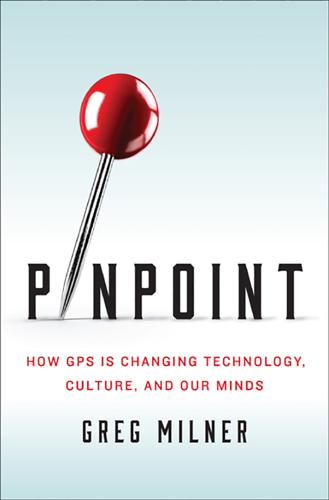
Pinpoint: How GPS Is Changing Our World
by
Greg Milner
Published 4 May 2016
Paul, Minn., 179 Sakhalin island, 81 Salton Sea, 203 Salzburg, 239–40 Samoa, 4 San Andreas Fault, 202–4, 208, 210, 219, 221, 224, 226 San Bernardino Mountains, 208 Sanchez, Alicia, 113 Sanchez, Carlos, 113 San Diego, Calif., 182, 218, 224 San Fernando Valley, 215 San Francisco, Calif., 79, 87, 142–43 1906 earthquake in, 202 San Francisco Bay, 142, 192 San Francisco 49ers, 192 San Gabriel Mountains, 208 San Jose, Calif., 203 Santa Ana winds, 226–27 Santa Cruz District Office, 13 Santa Cruz Islands, 11 Santa Cruz Mountains, 208 Sardinia, 159 satellite laser ranging, 209 satellite navigation systems, xvii, 37–45, 53, 76 see also Global Positioning System (GPS) satellites, 25–45, 47, 108 Air Force, xiv artificial, 44, 252–53 geostationary orbits of, 141–42 GRACE, 231–32 launching of, 29–36, 43, 61, 62–63, 88, 95 orbit and velocity of, xviii, 30, 39, 43–45, 63, 216 Soviet and Russian, 30–37, 44, 75, 101–2 spy, 39 television, 35 testing of, 58–59 tracking of, 29–32, 36–45, 59 U.S., 42–45 WAAS, 141–42, 171 see also Global Positioning System (GPS), satellites of; GPS signals Saturn, 259 Saudi Arabia, 62–64, 69 SCADA (Supervisory Control and Data Acquisition), 159 Scalia, Antonin, 189–90 Schofield, Andrew, 168 Schriever Air Force Base, xiii–xv, xx, 75, 261 Master Control Station at, xix, xx, 62–63, 256 Schultz, Kenneth, 53 Schwartzkopf, H. Norman, Jr., 65–66 Schweinfurt, 49 Schwitzgebel, Ralph, 172–77, 194–95, 198–200 Schwitzgebel, Robert, 172, 174–77, 194–95, 198–200 science, 207 cognitive, 118, 131 computer, 36, 84, 124, 239 neuro-, 129 social, 118 Science Committee on Psychological Experimentation (SCOPE), 173–74 Scotland, 195, 205 Scott, Logan, 149–50, 167 Scripps Institution of Oceanography, 218, 220, 224 seafloor spreading, 207 Sea of Japan, 81 Seattle, Wash., 225 Seaworth, Troy, 101–4, 105 Seaworth Farms, 101–4, 105 seismic monitoring equipment, 217–20, 222–24 GPS-enabled, 203–4 semiconductors, 78 Senate, U.S., 60 Preparedness Committee of, 35 sensors, 122 Serbia, 71 sex offenders, 196 sextants, 5 Shacklett, Mary, 191 Shapiro, Irwin, 209 Sharp, Andrew, 12–13 Shaw, John, xiii sidereal compass, 6, 14 Sierra Nevada Mountains, 206 Silicon Valley, 77, 79, 96 Simpson, John, 28 621B program, 44, 53, 57 Skinner, B.

This Will Make You Smarter: 150 New Scientific Concepts to Improve Your Thinking
by
John Brockman
Published 14 Feb 2012
Instead, they conduct controlled experiments by showing different versions to different groups of users until they have iterated to an optimal solution. (And with the amount of traffic those sites receive, individual tests can be completed in seconds.) They are helped, of course, by the fact that the Web is particularly conducive to rapid data acquisition and product iteration. But they are helped even more by the fact that their leaders often have backgrounds in engineering or science and therefore adopt a scientific—which is to say, experimental—mind-set. Government policies—from teaching methods in schools to prison sentencing to taxation —would also benefit from more use of controlled experiments.
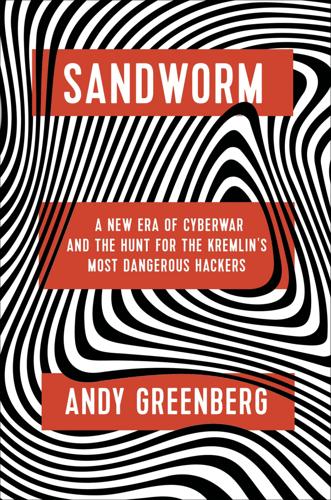
Sandworm: A New Era of Cyberwar and the Hunt for the Kremlin's Most Dangerous Hackers
by
Andy Greenberg
Published 5 Nov 2019
Wilhoit had an unusual background for a security researcher. Just two years earlier, he’d left a job in St. Louis as manager of IT security for Peabody Energy, America’s largest coal company. So he knew his way around so-called industrial control systems, or ICS—also known in some cases as supervisory control and data acquisition, or SCADA, systems. That software doesn’t just push bits around, but instead sends commands to and takes in feedback from industrial equipment, a point where the digital and physical worlds meet. ICS software is used for everything from the ventilators that circulate air in Peabody’s mines to the massive washing basins that scrub its coal, to the generators that burn coal in power plants to the circuit breakers at the substations that feed electrical power to consumers.

Reset
by
Ronald J. Deibert
Published 14 Aug 2020
Palantir technology “allows ICE agents to access a vast ‘ecosystem’ of data to facilitate immigration officials in both discovering targets and then creating and administering cases against them” and provides ICE with “access to intelligence platforms maintained by the Drug Enforcement Administration; the Bureau of Alcohol, Tobacco, Firearms and Explosives; the Federal Bureau of Investigation; and an array of other federal and private law enforcement entities.”245 The trends towards data fusion have helped blur military and civilian applications; technologies developed for commercial purposes are easily cross-purposed for public security, intelligence, and military functions.246 For their part, security agencies of all sizes have voracious appetites for data acquisition, fusion, and analytics services; many at the higher end (e.g., departments of defence, signals intelligence agencies) have deep pockets for contracting. National security regulations also conveniently shield many of these agencies from public transparency and accountability, meaning experiments in social media monitoring and other techniques of information control can be undertaken without much meddlesome outside scrutiny.247 This also makes it challenging to assess the efficacy of the tools: Do they actually accomplish useful goals?

Silence on the Wire: A Field Guide to Passive Reconnaissance and Indirect Attacks
by
Michal Zalewski
Published 4 Apr 2005
Unlike on a local Ethernet, which is usually a safe harbor for packets until a stranger wanders in, once data is out in the wild it is no longer possible to estimate and effectively manage threats that it is likely to face, as no single person can control the data’s path or determine the intentions of all parties involved in communications, let alone determine how they approach security. On such a complex network, the likelihood of a middle party becoming malicious is neither negligible nor easy to assess. In fact, even the person with whom you are establishing legitimate communications may have a hidden agenda or simply be a bit curious. Unsolicited data acquisition attempts, so to speak, are also different when carried out over the Internet for a couple other reasons. Most important, they do not have to be targeted, and they are not limited to a specific segment of physical infrastructure. Because they require so little effort on the part of an attacker, they become a viable route for acquiring potentially interesting data even prior to determining a precise way to profit or otherwise benefit from this knowledge.

The Measure of Progress: Counting What Really Matters
by
Diane Coyle
Published 15 Apr 2025
There is no definitive or consensus answer among economists, and the question has become a live one again as the growth rate of the residual (or TFP) has slowed substantially since its previous acceleration in the late 1990s—which was itself less impressive than postwar pro gress in the 1950s and 1960s (see Figure 1.1). But, as Zvi asked in his 1994 paper, how is it that we d on’t know what determines this rate of progress when it has been the subject of so much research by so many scholars? “What is it about our data and data acquisition structure, and possibly also our intellectual framework, that prevents us from making more progress on this topic?” he wrote. We still don’t know. This is the question motivating this book. At one level, the puzzle is why TFP growth has slowed or stagnated in so many of the richest economies since the mid-2000s.

The Costs of Connection: How Data Is Colonizing Human Life and Appropriating It for Capitalism
by
Nick Couldry
and
Ulises A. Mejias
Published 19 Aug 2019
Foursquare, at least until the introduction of the European Union’s General Data Protection Regulation, had tended to treat information, for example, about the web pages accessed through the app and users’ locations “as non-personal information” except when required otherwise by law; Google’s location API operates, however, without any need for user participation or knowledge.73 Yet such data acquisition is offered as an enhancement of “experience,” echoing the personalization doublespeak that retail marketers use to justify their intrusion into consumers’ lives.74 Philosophical Challenges to Self-Quantification Let’s imagine, however, that self-quantification’s proponents call Hegel’s notion of freedom to their aid.
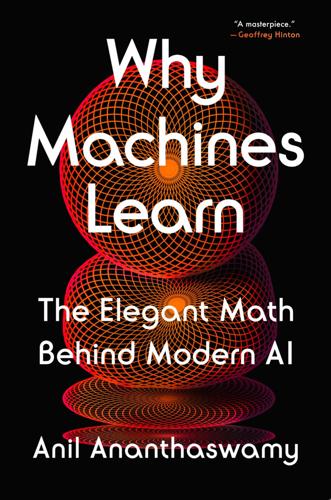
Why Machines Learn: The Elegant Math Behind Modern AI
by
Anil Ananthaswamy
Published 15 Jul 2024
So, for every two-second time interval, this resulted in a vector of a hundred dimensions, where each element of the vector contained the power in the signal in some frequency band. The overall frequency ranged from 0 to 50 Hz, with each band corresponding to a hundredth of that range. If the subject is monitored for three hours, say, then the monitoring generates a 100-dimensional vector every two seconds, for a total of 5,400 such vectors. Once the data acquisition and processing are complete, a subject’s EEG is encapsulated in a (5400×100) matrix, S. Each row of the matrix represents the power spectral density for a two-second interval; each column represents the power spectral density in each frequency bin. , where m = 5,400 (rows), n = 100 (columns) The other data that’s generated apart from the time series of the power spectral density is the inferred state of the subject: conscious or not.
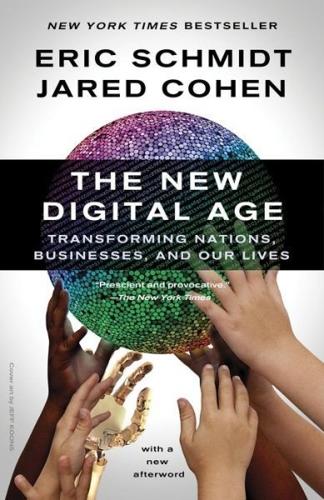
The New Digital Age: Transforming Nations, Businesses, and Our Lives
by
Eric Schmidt
and
Jared Cohen
Published 22 Apr 2013
If that’s not terrifying enough, while urban emergency efforts slow to a crawl amid massive physical destruction and loss of life, a sophisticated computer virus could attack the industrial control systems around the country that maintain critical infrastructure like water, power and oil and gas pipelines. Commandeering these systems, called supervisory control and data acquisition (SCADA) systems, would enable terrorists to do all manner of things: shut down power grids, reverse waste-water treatment plants, disable the heat-monitoring systems at nuclear power plants. (When the Stuxnet worm attacked Iranian nuclear facilities in 2012, it operated by compromising the industrial control processes in nuclear centrifuge operations.)

Machines of Loving Grace: The Quest for Common Ground Between Humans and Robots
by
John Markoff
Published 24 Aug 2015
Without skin, they were cybernetic skeleton-men assembled from an admixture of steel, titanium, and aluminum. Each was illuminated by an eerie blue LED glow that revealed a computer embedded in the chest that monitored its motor control. Each of the presently removed “heads” housed another computer that monitored the body’s sensor control and data acquisition. When they were fully equipped, the robots stood six feet high and weighed 330 pounds. When moving, they were not as lithe in real life as they were in videos, but they had an undeniable presence. It was the week before DARPA would announce that it had contracted Boston Dynamics, the company that Raibert had founded two decades earlier, to build “Atlas” robots as the common platform for a new category of Grand Challenge competitions.
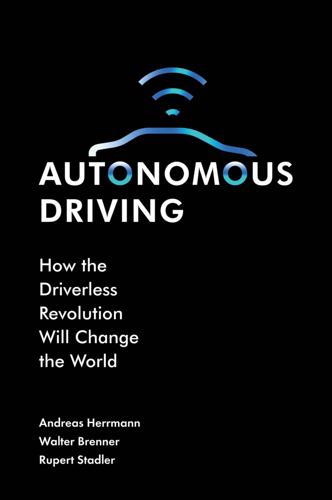
Autonomous Driving: How the Driverless Revolution Will Change the World
by
Andreas Herrmann
,
Walter Brenner
and
Rupert Stadler
Published 25 Mar 2018
One of the most challenging and interesting applications for deep neural networks in the field of self-driving cars is a complete end-to-end solution, which describes a neural-network architecture spreading all the way from 116 Autonomous Driving sensory detection to plan of action and covers the full spectrum of selfdriving. This solution could be very beneficial due to the simplistic nature of data acquisition for training. Ideally, this network could learn to drive a car just by monitoring multiple human drivers and adopting the rules of driving; almost like a student driver learning the correct behaviour while observing an experienced driver, which means that no manual annotation of data like object locations or intent would be necessary.

Across the Airless Wilds: The Lunar Rover and the Triumph of the Final Moon Landings
by
Earl Swift
Published 5 Jul 2021
The other crews decided on the same division of labor: the commander would drive the rover, and the lunar module pilot would ride. “Occasionally we turned on the movie camera,” Duke added. “We had a sixteen-millimeter movie camera that was mounted to a post right next to the instrument panel.” Its primary purpose was to capture moving pictures while the rover was itself moving. NASA called it a “data acquisition camera,” or DAC. The label was so vague as to be virtually meaningless, but it gave the astronauts another acronym to use. When the astronauts weren’t on hand, Survey staffers used the Grover to time and streamline sample gathering for the upcoming Apollo missions. By monitoring its TV and radio feeds from their offices in Flagstaff, geologists practiced the role they’d play at Mission Control in real time.

Building Habitats on the Moon: Engineering Approaches to Lunar Settlements
by
Haym Benaroya
Published 12 Jan 2018
Figure 4.1.The deployment of the United States flag on the surface of the Moon is captured on film during the first lunar landing mission, Apollo 11. Here, astronaut Neil A. Armstrong, commander, stands on the left at the flag’s staff. Astronaut Edwin E. Aldrin, Jr., lunar module pilot, is also pictured. The picture was taken from film exposed by the 16 mm Data Acquisition Camera that was mounted in the Lunar Module . While astronauts Armstrong and Aldrin descended in the Lunar Module “Eagle” to explore the Sea of Tranquility region of the Moon, astronaut Michael Collins, command module pilot, remained with the Command and Service Module “Columbia” in lunar orbit.
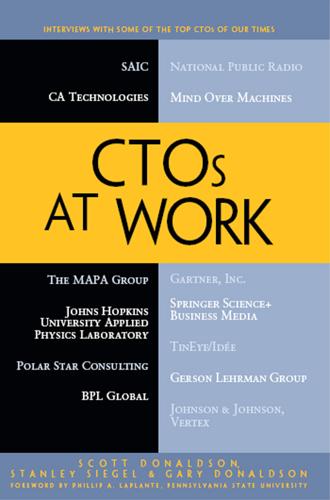
CTOs at Work
by
Scott Donaldson
,
Stanley Siegel
and
Gary Donaldson
Published 13 Jan 2012
Kaplow: For my undergraduate, I went to NYU [New York University] and I majored in physics and in history. I realized that physics, although I enjoyed it quite a bit, was not necessarily the long-term path, but it did give me the opportunity to work in the High Energy physics department. I supported some experiments, mostly on the technology side for data acquisition and analysis. I realized that physics wasn't really going to be my true love, but I enjoyed it immensely and had some great professors. I was on campus there for four years and then I moved to the computer science department at the Courant Institute of Mathematical Sciences, which was sort of a natural progression from the kind of computer work I was doing in the physics department.

Smart Cities: Big Data, Civic Hackers, and the Quest for a New Utopia
by
Anthony M. Townsend
Published 29 Sep 2013
Stuxnet, the virus that attacked Iran’s nuclear weapons plant at Natanz in 2010, was just the beginning. Widely believed to the product of a joint Israeli-American operation, Stuxnet was a clever piece of malicious software, or malware, that infected computers involved with monitoring and controlling industrial machinery and infrastructure. Known by the acronym SCADA (supervisory control and data acquisition) these computer systems are industrial-grade versions of the Arduinos discussed in chapter 4. At Natanz some six thousand centrifuges were being used to enrich uranium to bomb-grade purity. Security experts believe Stuxnet, carried in on a USB thumb drive, infected and took over the SCADA systems controlling the plant’s equipment.

The Patient Will See You Now: The Future of Medicine Is in Your Hands
by
Eric Topol
Published 6 Jan 2015
Only now that we can capture such panoromic data on each individual, and in populations of people, along with the ability to manage and process such enormous sets of data, are we in the enviable position of predicting illness—and maybe, just maybe, once we get good at it, even preventing diseases in some individuals from ever happening. FIGURE 13.4: Really big data from the individual and comparing that individual’s data with all of the Earth’s population (IoMT = Internet of Medical Things). The two levels of data acquisition, comparison, and machine learning—individual and population—are critical, across all of the components of one’s GIS. Predicting Disease: Who, When, How, Why, and What? First, let’s make sure we differentiate prediction from diagnosis. Online symptom checkers66 are getting increasing electronic traffic and attention on the Internet to help people “self” (computer-assisted) diagnose, but they don’t predict an illness.
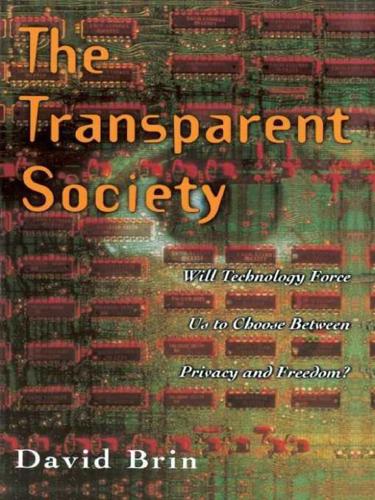
The Transparent Society: Will Technology Force Us to Choose Between Privacy and Freedom?
by
David Brin
Published 1 Jan 1998
We are, at our core, information pack rats and inveterate correlators. We hunger for news, facts, and rumors—especially when they are forbidden! In this attribute, the rich and powerful, and major corporations, are no different from the rest of us. The predictable consequence? If one kind of data acquisition is made illegal, you can be certain that someone will be doing it anyway on the sly, and possibly turning its dissemination into yet another highly profitable criminal enterprise, one that must be policed by yet another bureaucracy. Here is a little philosophical exercise that can sometimes be instructive.
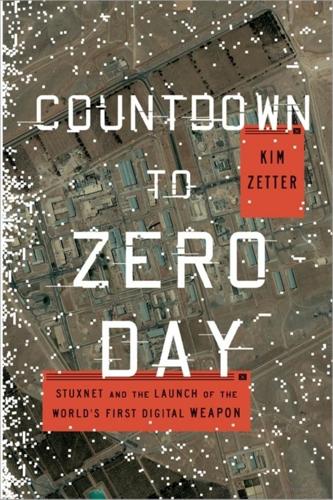
Countdown to Zero Day: Stuxnet and the Launch of the World's First Digital Weapon
by
Kim Zetter
Published 11 Nov 2014
Few people in the world had ever heard of the devices—this, despite the fact that PLCs are the components that regulate some of the most critical facilities and processes in the world. PLCs are used with a variety of automated control systems that include the better-known SCADA system (Supervisory Control and Data Acquisition) as well as distributed control systems and others that keep the generators, turbines, and boilers at power plants running smoothly.2 The systems also control the pumps that transmit raw sewage to treatment plants and prevent water reservoirs from overflowing, and they open and close the valves in gas pipelines to prevent pressure buildups that can cause deadly ruptures and explosions, such as the one that killed eight people and destroyed thirty-eight homes in San Bruno, California, in 2010.

Mastering Blockchain, Second Edition
by
Imran Bashir
Published 28 Mar 2018
Machine learning plays a vital role in AI by making use of raw data as a learning resource. A key requirement in AI-based systems is the availability of authentic data that can be used for machine learning and model building. The explosion of data coming out IoT devices, smartphone's, and other data acquisition means that AI and machine learning is becoming more and more powerful. There is, however, a requirement of authenticity of data. Once consumers, producers, and other entities are on a blockchain, the data that is generated as a result of interaction between these entities can be readily used as an input to machine learning engines with a guarantee of authenticity.

Project Hail Mary
by
Andy Weir
Published 15 May 2021
Plaintiff, you may begin your opening statement.” The man stood. “May it please the court and ladies and gentlemen of the jury, my name is Theodore Canton, counsel for the Intellectual Property Alliance in this action. “During this trial, we will show that Project Hail Mary has overstepped its authority in the matter of digital data acquisition and licensing. They have, in their possession, a gigantic solid-state-drive array upon which they have copied literally every single piece of software that has ever been copyrighted, as well as every single book and literary work that has ever been available in any digital format. All of this was done without payment or licensing to the proper copyright holders or intellectual property owners.
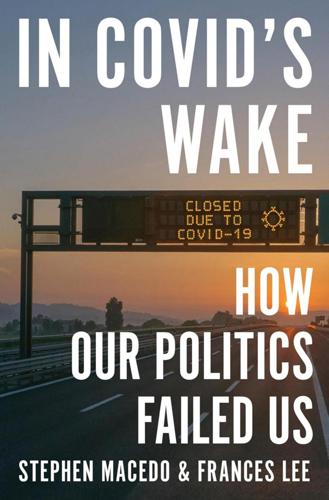
In Covid's Wake: How Our Politics Failed Us
by
Stephen Macedo
and
Frances Lee
Published 10 Mar 2025
Models simplify reality by providing an idealized picture of the working of a system or process, such as virus transmission in community settings. They have their use: “Models serve to o rganize and synthesize data from a variety of sources, identify data gaps, and set priorities for further data acquisition. Modeling can also be used to promote dialogue between scientists, policymakers, and stakeholders about alternatives, uncertainties, assumptions and value judgments that underlie decisions.”68 There was, however, a distinct danger in overreliance on models: “Above all, models should be “ F o l l o w i n g t h e S c i e n c e ” b e f or e C o v i d 41 viewed as aids to decision-making, rather than substitutes for decision- making.

WTF?: What's the Future and Why It's Up to Us
by
Tim O'Reilly
Published 9 Oct 2017
Learning is an essential next step with each leap forward in augmentation. I’ve observed this throughout my career educating programmers about the next stages in technology. When I wrote my first computer manual in 1978, for Digital Equipment Corporation’s “LPA 11K Laboratory Peripheral Accelerator,” it described how to transfer data from high-speed laboratory data acquisition devices using assembly language, the low-level language corresponding closely to the actual machine code that is still hidden deep inside our computers. The directions to the computer had to be very specific: move the data from this device port to that hardware memory register; perform this calculation on it; put the result into another memory register; write it out to permanent storage.

Analysis of Financial Time Series
by
Ruey S. Tsay
Published 14 Oct 2001
ISBN: 0-471-41544-8 CHAPTER 5 High-Frequency Data Analysis and Market Microstructure High-frequency data are observations taken at fine time intervals. In finance, they often mean observations taken daily or at a finer time scale. These data have become available primarily due to advances in data acquisition and processing techniques, and they have attracted much attention because they are important in empirical study of market microstructure. The ultimate high-frequency data in finance are the transaction-by-transaction or trade-by-trade data in security markets. Here time is often measured in seconds.

Superintelligence: Paths, Dangers, Strategies
by
Nick Bostrom
Published 3 Jun 2014
In the unrealistic limiting case, we could imagine emulating a brain at the level of its elementary particles using the quantum mechanical Schrödinger equation. Then one could rely entirely on existing knowledge of physics and not at all on any biological model. This extreme case, however, would place utterly impracticable demands on computational power and data acquisition. A far more plausible level of emulation would be one that incorporates individual neurons and their connectivity matrix, along with some of the structure of their dendritic trees and maybe some state variables of individual synapses. Neurotransmitter molecules would not be simulated individually, but their fluctuating concentrations would be modeled in a coarse-grained manner.

To Save Everything, Click Here: The Folly of Technological Solutionism
by
Evgeny Morozov
Published 15 Nov 2013
The latter is a deliberate commitment, not a technological constraint stemming from a lack of resources. But Gordon Bell’s one-man museum, while nominally promising to turn its heroes into curators, rejects the very selectionist spirit of curatorial work; like the self-trackers and data miners we met in the previous chapter, Gordon Bell opts for preemptive data acquisition, hoping that one day it will provide him not just with the right answers but also with the right questions. Or perhaps it will just tell him where his car keys are—and who among us relishes the time spent crawling under the table searching for them? But wearing a gadget like a SenseCam around your neck may also help you find the greatest keys of all: those to your inner self.
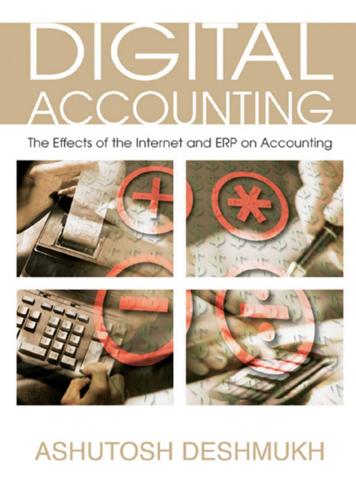
Digital Accounting: The Effects of the Internet and Erp on Accounting
by
Ashutosh Deshmukh
Published 13 Dec 2005
Detailed functionalities in these areas are briefly discussed below. • Life cycle data management: Life Cycle Data Management (LCDM) involves managing data for products and assets from design to retirement phases. LCDM integrates with a wide range of CAD tools to support online and offline design of products. LCDM also supports Supervisory Control and Data Acquisition (SCADA) tools, Geographic Information Systems (GIS) and Microsoft Office applications. LCDM has an XML interface to quickly connect with third-party tools. LCDM offers handling of different product features and requirement documents, bill-of-materials, routing of materials, CAD models and other technical documentation over the Internet and intranet.
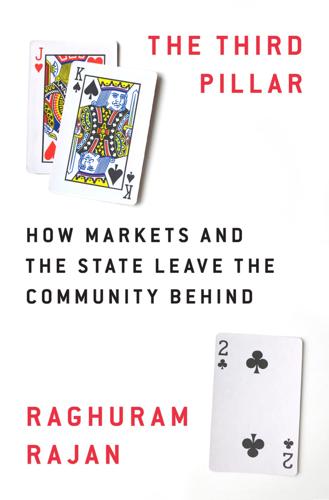
The Third Pillar: How Markets and the State Leave the Community Behind
by
Raghuram Rajan
Published 26 Feb 2019
Once the individual controls her data, she will have the option to sell portions of it to firms, or enter into longer-term arrangements where firms would provide her services in return for the use of her data. Some of what is implicit today would become explicit, the difference is it would be controlled by the user. Indeed, new technologies like blockchains will help decentralize this process, and bargaining bots can help routinize data acquisition for a fee when corporations need vast amounts of data to train their artificial-intelligence applications.15 Another important source of power that e-platforms or social media have is their ownership of the network. If an individual leaves a network, her access to it, and to the many relationships she has built on it, are cut off.

Of a Fire on the Moon
by
Norman Mailer
Published 2 Jun 2014
Of course, they had Mission Control behind them, and from Mission Control quick links extended to all the experts in all the fields—there were the engineering equivalents of experts on plainsong and experts on Burroughs, experts on Gay, Cheever and Updike, Bellow and Smollett, Swinburne and Walter Savage Landor, Ronald Firbank and Baron Corvo, Ben Jonson and Babette Deutsch, name it, name it—Mission Control was in touch with men who knew all about the subject of toggle switches or television grids, knew them like an English honors man knew Shelley’s letters after forty years, Mission Control was in touch with helium transfer men, honeycomb panel men, valve men and monomethyl hydrazine men, data acquisition system engineers and gigacycle deep space antenna fellows, solenoid experts and nuclear particle detection masters, single channel decommutator designers, and pseudorandom noise ranging test set doctors, specialists in mass flow-meters, astronomers, and air-conditioner men, flight direction system engineers, orbital physicists—the astronauts did not have to know it all.
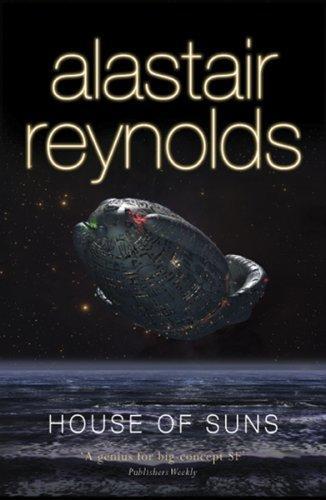
House of Suns
by
Alastair Reynolds
Published 16 Apr 2008
While I was distracted, three of the arms had reached out and made contact with my suit. I was being hauled in slyly, as if they did not want me to realise what was happening. I flinched and jerked myself free. ‘May I ask some questions, curator?’ ‘There is never any harm in asking.’ But there was, I thought. There was potential harm in the most innocent act of data acquisition, as even the curator had acknowledged. ‘There’s quite a lot about the Vigilance we don’t know.’ ‘Many of your kind have been here already. Did they not satisfy your curiosity?’ ‘There are still some pieces missing from the picture.’ ‘And you think you will make a difference?’ ‘It’s my duty to try.

Area 51: An Uncensored History of America's Top Secret Military Base
by
Annie Jacobsen
Published 16 May 2011
“The impetus for these tests”: Ibid., 47. 15. his rationale: Ground stations were supposed to measure acoustic waves that would happen as a result of the blast but Teak detonated seven miles laterally off course to the south and the communication systems were knocked out. Orange detonated four miles higher than it was supposed to and “the deviations affected data acquisitions.” 16. The animals’ heads had been locked in gadgets: Oral history interview with Air Force colonel John Pickering, 52. Film footage viewed at the Atomic Testing Museum, Las Vegas. 17. “Teak and Orange events would ‘burn a hole’ into the natural ozone layer”: Hoerlin, “United States High-Altitude Test,” 43. 18.

In the Age of the Smart Machine
by
Shoshana Zuboff
Published 14 Apr 1988
How different it is for a high-level executive to sit in his or her office and use a desktop terminal to view summaries of operating data or to review exceptions to optimal ranges of performance. It is still reasonable to argue that such an executive should not spend time responding to data that others are better positioned to manage. Once the awkwardness of the data acquisition process is eliminated, however, the immediate face validity of such arguments is diminished. 16 As the material circumstances of the enterprise evolve, so do the de- mands on the manager. In a highly informated organization such as Cedar Bluff, the autonomy of the data base and the extent of both vertical and horizontal channels of access to the data added considerable weight to the already severe pressures that middle managers felt.

Future Crimes: Everything Is Connected, Everyone Is Vulnerable and What We Can Do About It
by
Marc Goodman
Published 24 Feb 2015
For a sneak peek of what this dystopian world without computers and electricity looks like, one need only turn on the television for a taste of techno-Armageddon-cum-zombie apocalypse from shows such as The Walking Dead or from films like Planet of the Apes and Live Free or Die Hard. Hollywood machinations aside, our computer-based critical information infrastructures are increasingly under attack and deeply vulnerable to systemic failure—the impact from which could be truly catastrophic. Much of the world’s critical infrastructures utilize supervisory control and data acquisition (SCADA) systems to function. SCADA systems “automatically monitor and adjust switching, manufacturing, and other process control activities, based on digitized feedback data gathered by sensors.” These are specialized, and often older, computer systems that control physical pieces of equipment that do everything from route trains along their tracks to distribute power throughout a city.
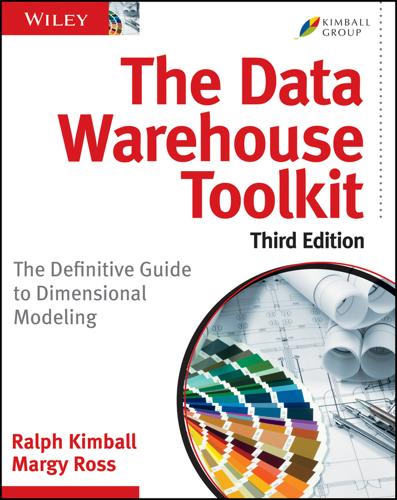
The Data Warehouse Toolkit: The Definitive Guide to Dimensional Modeling
by
Ralph Kimball
and
Margy Ross
Published 30 Jun 2013
Figure 1.9 illustrates a simplified version of the CIF, focusing on the core elements and concepts that warrant discussion. Figure 1.9 Simplified illustration of the hub-and-spoke Corporate Information Factory architecture. With the CIF, data is extracted from the operational source systems and processed through an ETL system sometimes referred to as data acquisition. The atomic data that results from this processing lands in a 3NF database; this normalized, atomic repository is referred to as the Enterprise Data Warehouse (EDW) within the CIF architecture. Although the Kimball architecture enables optional normalization to support ETL processing, the normalized EDW is a mandatory construct in the CIF.

The Singularity Is Near: When Humans Transcend Biology
by
Ray Kurzweil
Published 14 Jul 2005
Llinas and J. P. Welsh, "On the Cerebellum and Motor Learning," Current Opinion in Neurobiology 3.6 (December 1993): 958–65; E. Courchesne and G. Allen, "Prediction and Preparation, Fundamental Functions of the Cerebellum," Learning and Memory 4.1 (May–June 1997): 1-35; J. M. Bower, "Control of Sensory Data Acquisition," International Review of Neurobiology 41 (1997): 489–513. 78. J. Voogd and M. Glickstein, "The Anatomy of the Cerebellum," Trends in Neuroscience 21.9 (September 1998): 370–75; John C. Eccles, Masao Ito, and János Szentágothai, The Cerebellum as a Neuronal Machine (New York: Springer-Verlag, 1967); Masao Ito, The Cerebellum and Neural Control (New York: Raven, 1984). 79.
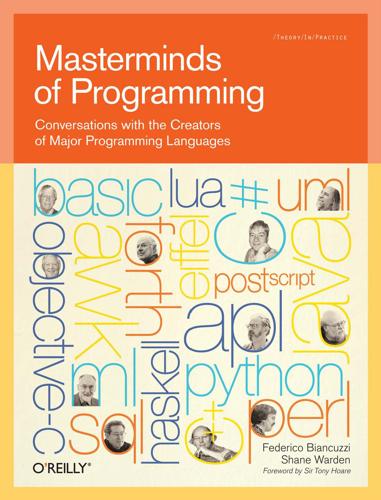
Masterminds of Programming: Conversations With the Creators of Major Programming Languages
by
Federico Biancuzzi
and
Shane Warden
Published 21 Mar 2009
James Gosling received a B.Sc. in computer science from the University of Calgary, Canada in 1977. He received a Ph.D. in computer science from Carnegie-Mellon University in 1983. The title of his thesis was “The Algebraic Manipulation of Constraints.” He is currently a VP & Fellow at Sun Microsystems. He has built satellite data acquisition systems, a multiprocessor version of Unix, several compilers, mail systems, and window managers. He has also built a WYSIWYG text editor, a constraint-based drawing editor and a text editor called Emacs for Unix systems. At Sun, his early activity was as lead engineer of the NeWS window system.

Trading and Exchanges: Market Microstructure for Practitioners
by
Larry Harris
Published 2 Jan 2003
Analysts who use price benchmarks obtained long before managers decided to trade are immune to the split order problem, but they also measure the degree to which their portfolio composition decisions depend on past prices. No price benchmark is perfect for estimating implicit transaction costs. Analysts must make trade-offs between estimation cost and various estimator properties. When data acquisition costs are no consideration, the implementation shortfall is the best transaction cost estimator. It is not subject to any of the biases discussed above. When the costs of collecting data are significant, traders may prefer other estimators. Retail traders typically use the effective spread transaction cost estimator because it is generally unbiased for small orders.

The Quest: Energy, Security, and the Remaking of the Modern World
by
Daniel Yergin
Published 14 May 2011
They can mobilize networks of computers to mount a “bot attack” aimed at denial of service, shutting down systems. They can introduce malware—malicious software—that will cause systems to malfunction. Or they can seek, from remote locations, to take control of and disrupt systems. One point of entry is through the ubiquitous SCADA systems, the supervisory control and data acquisition computer systems that monitor and control every kind of industrial process. Originally, they were site specific, but now they are connected into larger information networks. Malicious intruders may gain access through a thumb drive and a desktop computer. A multitude of new entry points are provided by the proliferation of wireless devices and possibly by the smart meters that are part of the smart grid and that provide two-way communications between homes and the electrical distribution system.11 A test at a national laboratory in 2007 showed what happened when a hacker infiltrated an electric system.

Code Complete (Developer Best Practices)
by
Steve McConnell
Published 8 Jun 2004
Program Design Program design includes the major strokes of the design for a single program, mainly the way in which a program is divided into classes. Some program designs make it difficult to write a high-performance system. Others make it hard not to. Cross-Reference For details on designing performance into a program, see the "Additional Resources" section at the end of this chapter. Consider the example of a real-world data-acquisition program for which the highlevel design had identified measurement throughput as a key product attribute. Each measurement included time to make an electrical measurement, calibrate the value, scale the value, and convert it from sensor data units (such as millivolts) into engineering data units (such as degrees Celsius).

Great North Road
by
Peter F. Hamilton
Published 26 Sep 2012
Five minutes after he walked away it had burst into flame, much to the delight of the local feral youths. After that, there’d been no contact between Sherman and Aldred. Sherman had gone about his usual dark business with care. The file Linsell assembled, containing calls about secondary money transfers, tox procurement, corporate data acquisition, and two blackmail scams being set up, would have been enough for the city prosecutor to obtain a twenty-year sentence. Linsell wanted something else. Sherman had to be holding Umbreit’s family somewhere. It was their hold over him, the leverage to force him to build whatever it was they had him doing in the farmhouse barn.